Hello everyone and welcome aboard this report. We're starting over with a new domestic Indian flight.
Introduction
After a weekend spent visiting the nearby city of Mysore the previous week, so no flight taken, my colleague and I set off for the city of Hampi. This tiny town located in the north of Karnataka state is only about 400 km from Bangalore, but the journey takes around 7.5 hours by road. The train isn’t much better, count on a 9-hour trip, which we opted to do on an overnight train for the inbound journey. But why go through so much trouble to reach this remote corner of Karnataka? You’ll find the answer in the bonus section.
For the return trip, I had planned to depart from the small airport in Vidyanagar. Unfortunately, by the time I finally managed to get our train tickets, there were no more flights available from that airport, even though I had checked just the day before! With only the outbound train tickets in hand, I needed a backup plan for the return. The solution was to head to Hubbali (Hubli) airport, located about 2.5 hours by road from Hampi, not ideal, but still manageable. Fortunately, Indigo offered an affordable one-way flight for around €40.
Reasonable if booked two weeks in advance by European standards, but still not exactly cheap compared to the train, where a first-class sleeper ticket costs only €18.
Flight routing
- 1
- 2
- 3
- 46E7378 - Economique - Hubli-Dharwad => Bangalore - ATR 72-600
Unsurprisingly, Hubli airport is a unique entry on our site. It's true that traffic is minimal, with days like this Sunday seeing departures you could count on one hand. Indigo dominates the field here, operating daily flights to Hubbali from Pune, Delhi, Hyderabad, and of course Bangalore, using a mix of Airbus A320neos and ATR 72-600s.
It's also worth noting that 6E (Indigo) operates flights to Mumbai as well.
Departure from Hubli in the evening
After a rather long journey from Hampi, thankfully on a relatively new and lightly no so croweded expressway.
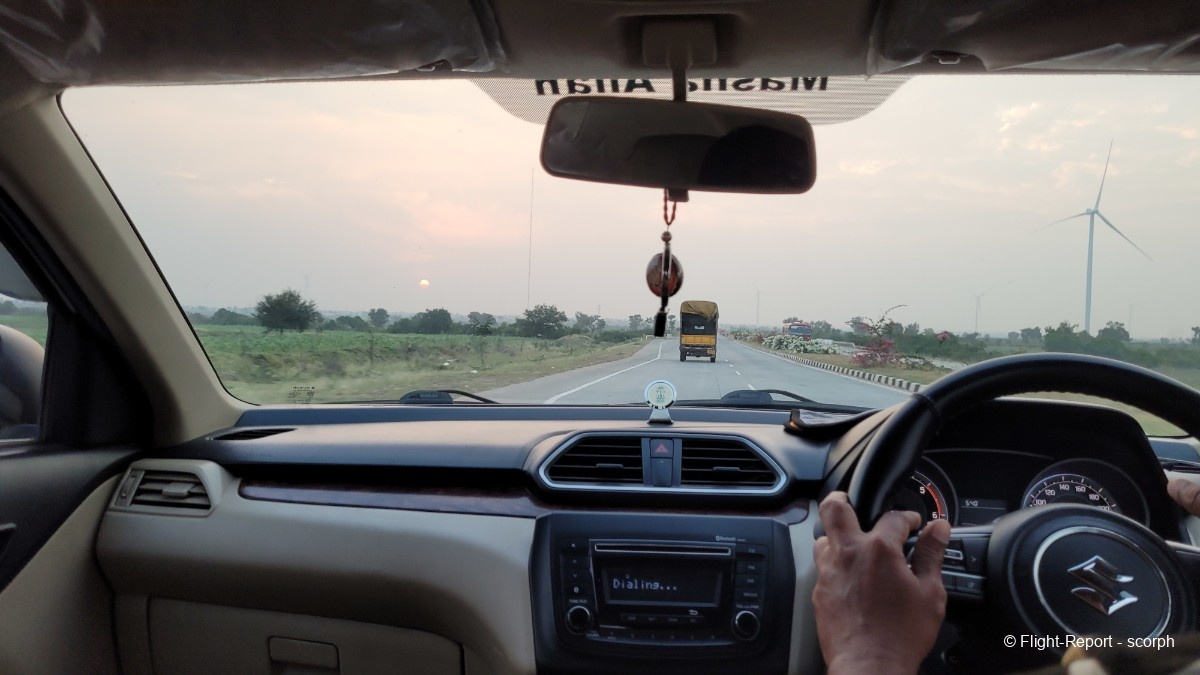
We arrive at Hubli airport after nightfall, having settled the fare and thanked our evening driver who now has to make the return journey on his own. As is often the case, Indian airports are well-guarded, with security checks taking place outside the terminal. It's worth noting that the exterior of the airport is surprisingly modern.
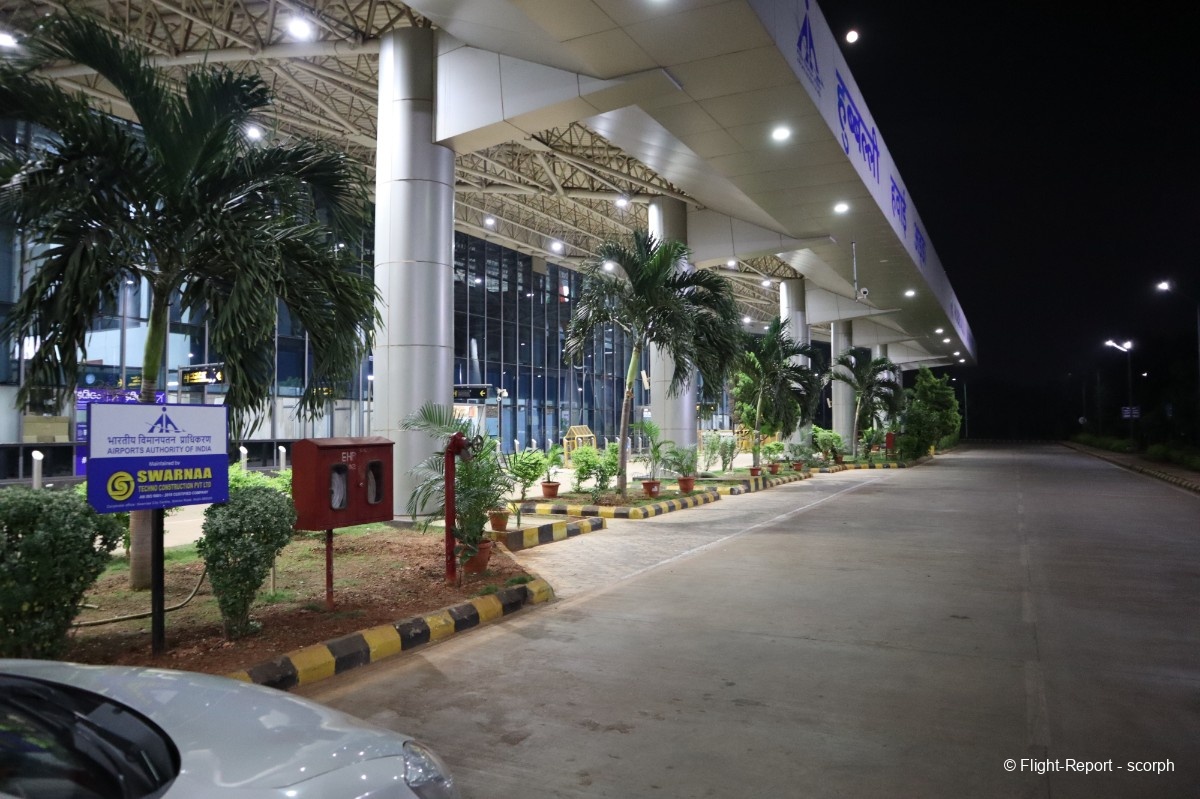
If you want to see anything beyond the airport’s front doors, you’ll need both a ticket and your ID, which are thoroughly checked by the security officer at the entrance. That explains the lack of photos, we were just two passengers entering the terminal, outnumbered by several security/military agents, so we had to stay discreet will taking pictures.
Inside the check-in hall, we were greeted by numerous IndiGo staff who guided us straight to the baggage scanner. The staff were attentive and friendly, with big smiles.
As I was traveling with just a backpack, it received both a security seal and a small plastic strap to keep the shoulder straps together — carefully applied by an IndiGo agent.
Back at the counter, a cheerful hostess handed us two cardboard boarding passes after checking our reservation and passports, while my 6 kg backpack was sent off to the hold. Oh ! I almost forgot to mention it, since it’s such a standard thing in India, but the base fare on low-cost carriers typically includes 15 kg of checked baggage and one “large” cabin bag.
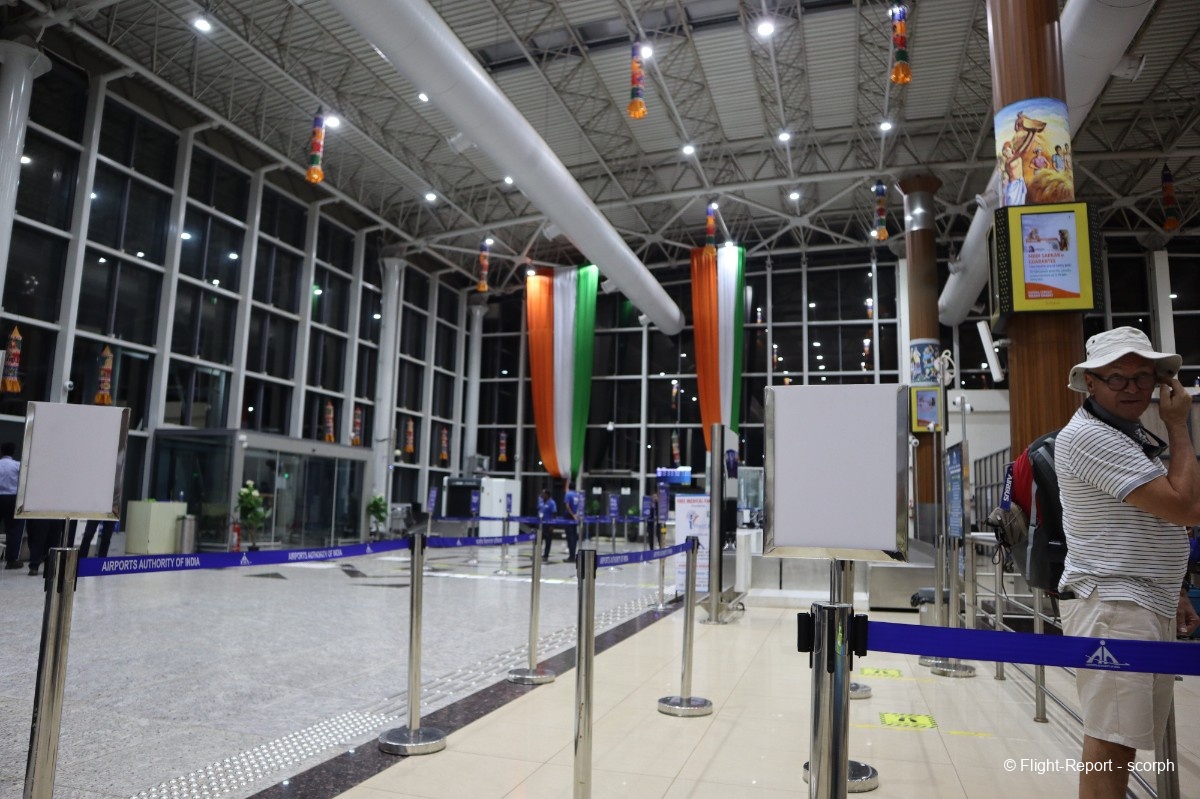
After checking in, we were approached by two IndiGo staff members who asked to take a photo celebrating IndiGo’s 2,000th flight of the day. Fame was clearly around the corner for us!
Another, much more Indian celebrity also made an appearance: Gandhi, featured in a mural on the groundside of the terminal. Aside from that, there were very few other services available in this area of the terminal.
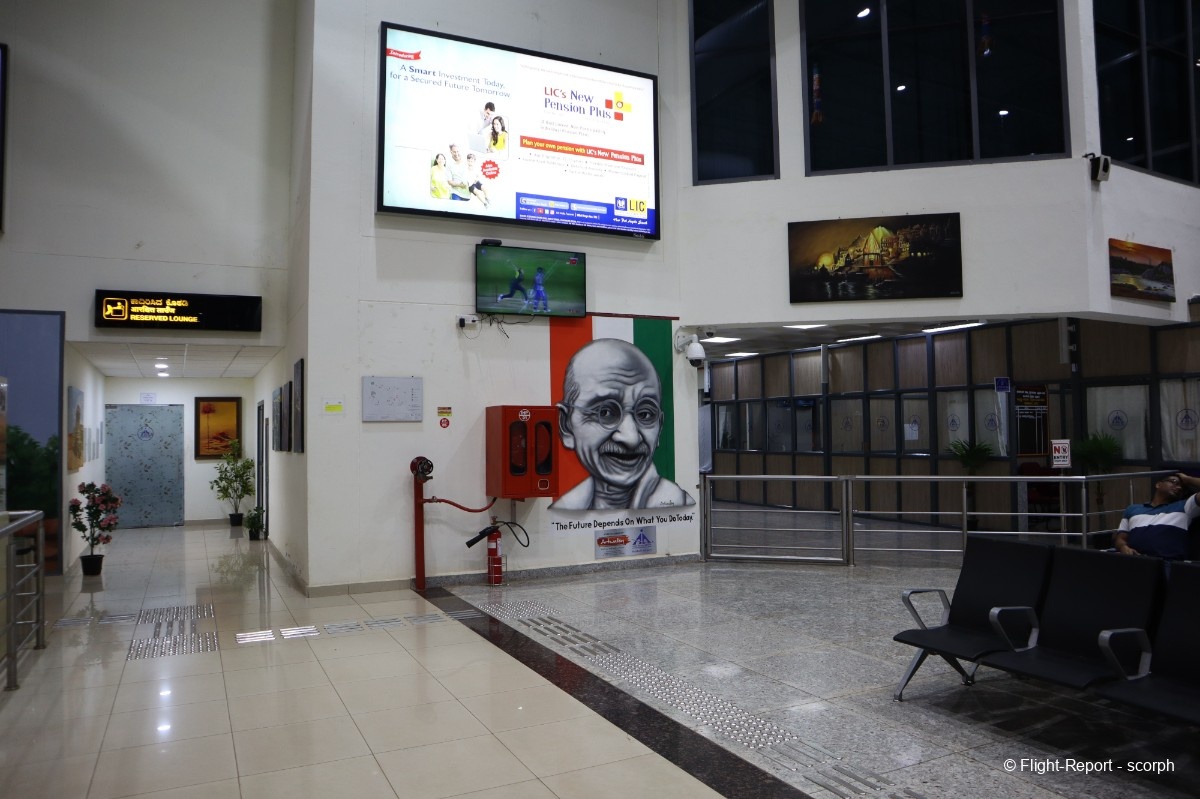
Back to the security checks, where the process at the security checkpoint wasn’t exactly smooth. There was only one baggage scanner, and three metal detector lanes, one for women and two for men. The usefulness of these detectors is a bit questionable, since even if you don’t ring the alarm, you’re still subject to an additional check.
One key difference from Europe: liquids over 100 ml are allowed in carry-on luggage a relief for my water bottle and sunscreen, both of which made it through.
Once past security, we arrived in the airside hall, which consists of just three boarding gates, a small shop, and a tiny snack bar the only options available for waiting passengers.
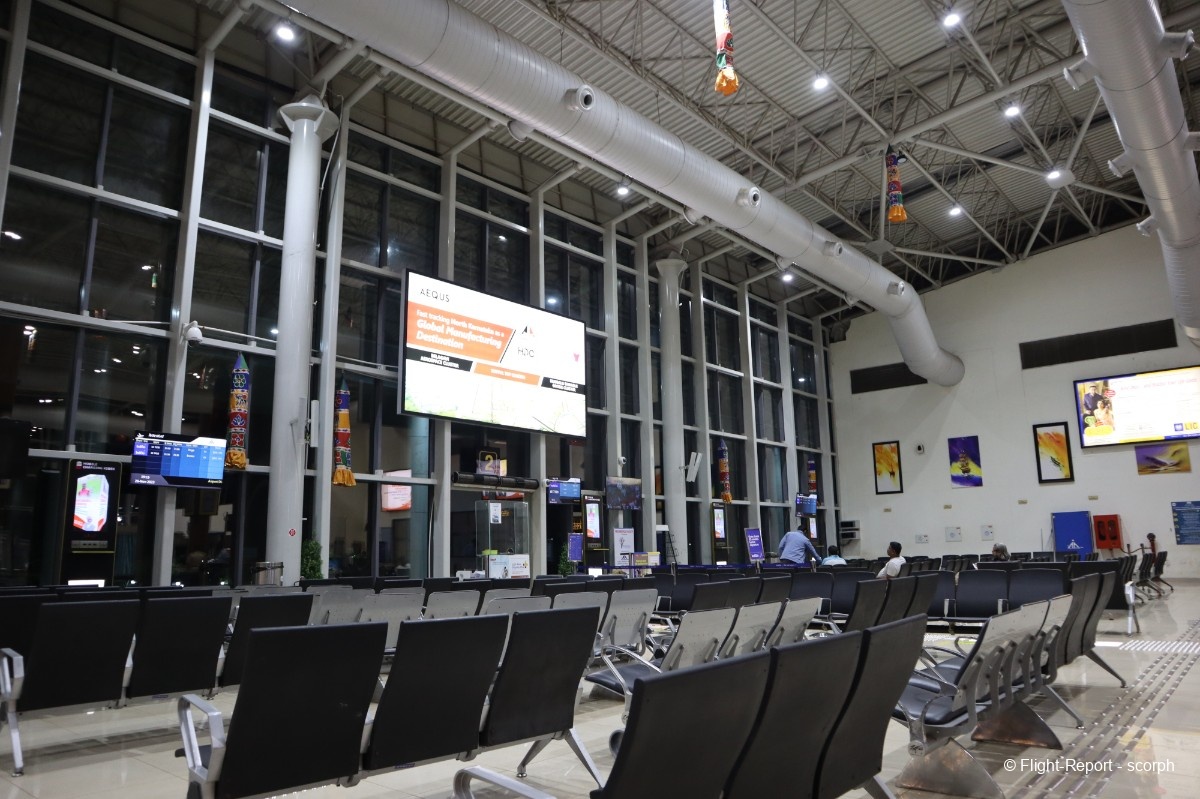
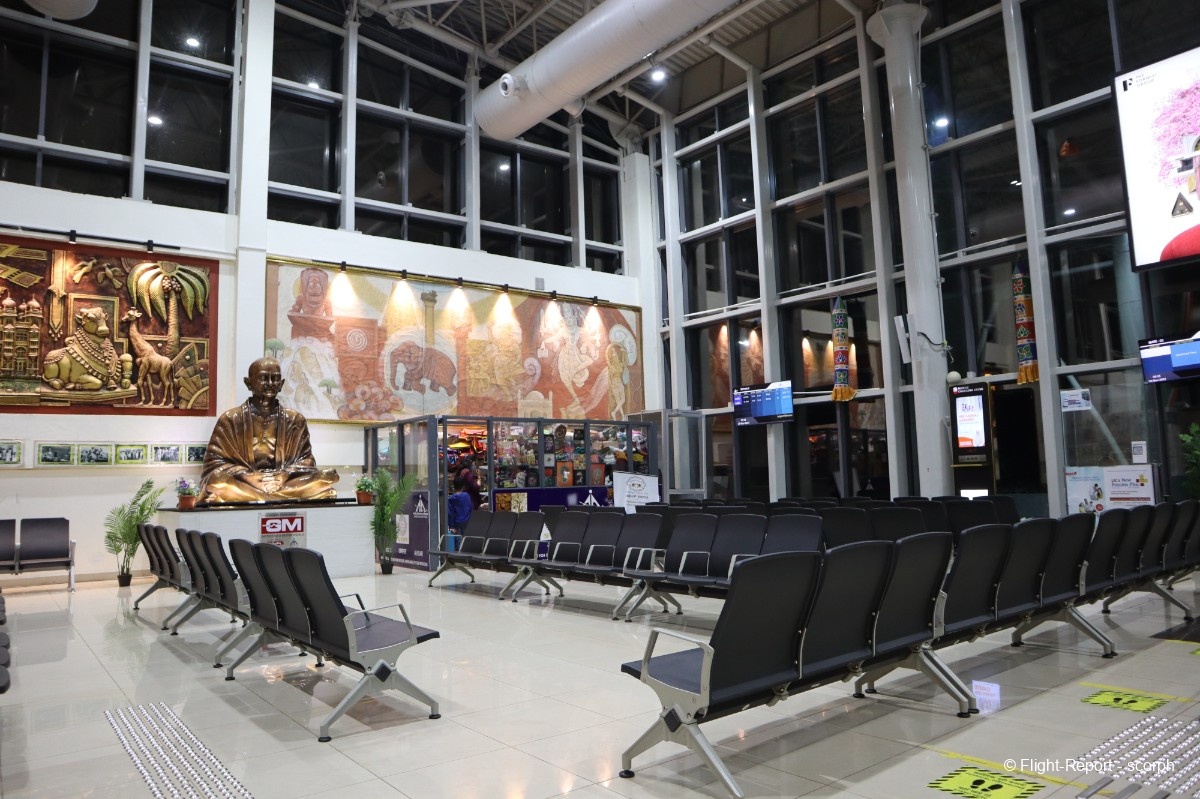
Since we hadn’t had dinner, we picked up a few things from the snack bar for a homemade light meal. Prices were steep by Indian standards, and the staff member at the counter wasn’t particularly friendly which is rare enough in India to be worth mentioning.
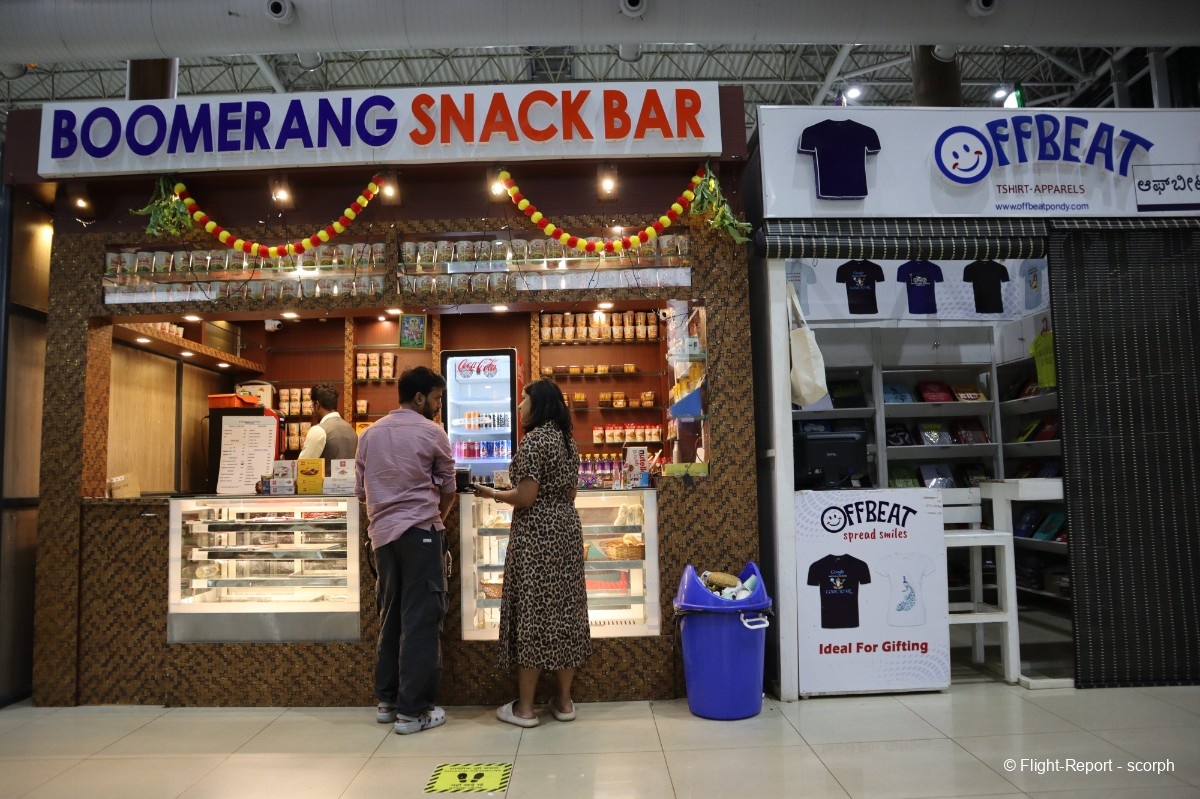
There were plenty of seats available, and we had no trouble finding a spot. The ultimate luxury? Sitting right in front of a TV broadcasting the India–Australia cricket test match, just weeks after the two teams had faced off in the World Cup final, hosted in India, where the home team ultimately fell at the final hurdle against the Kangaroos.
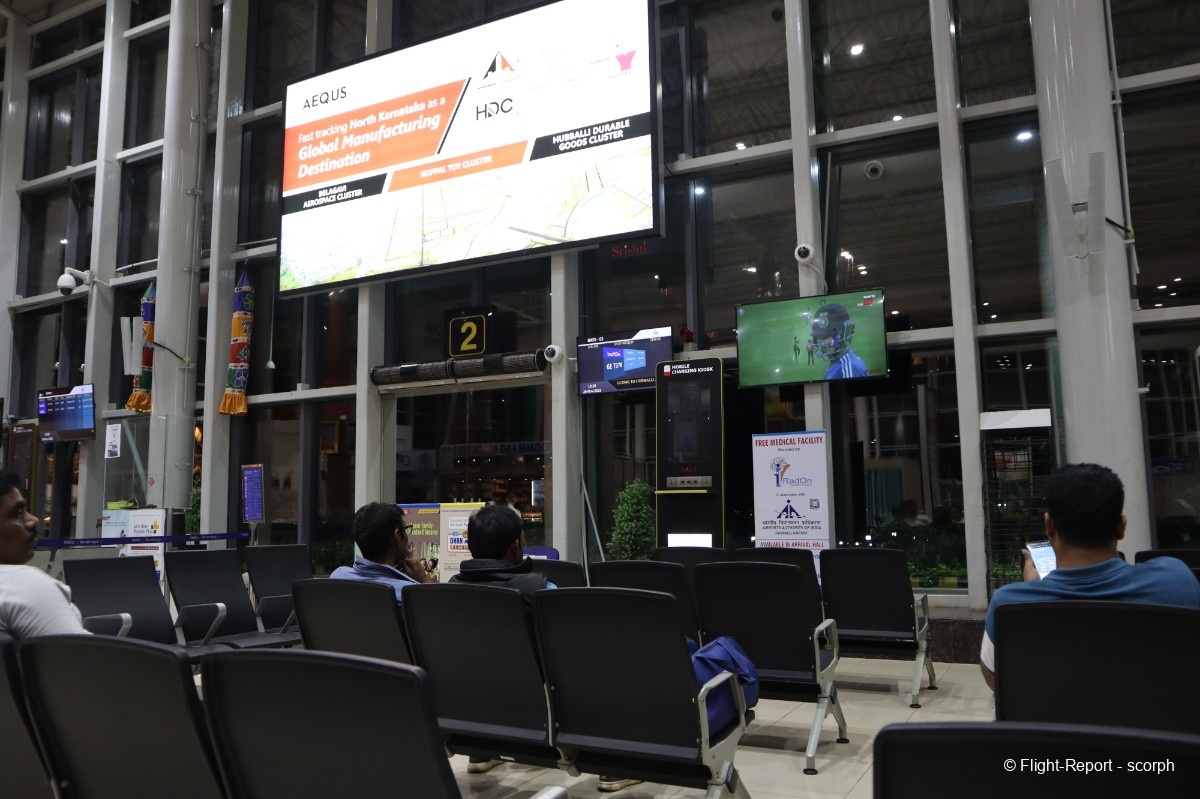
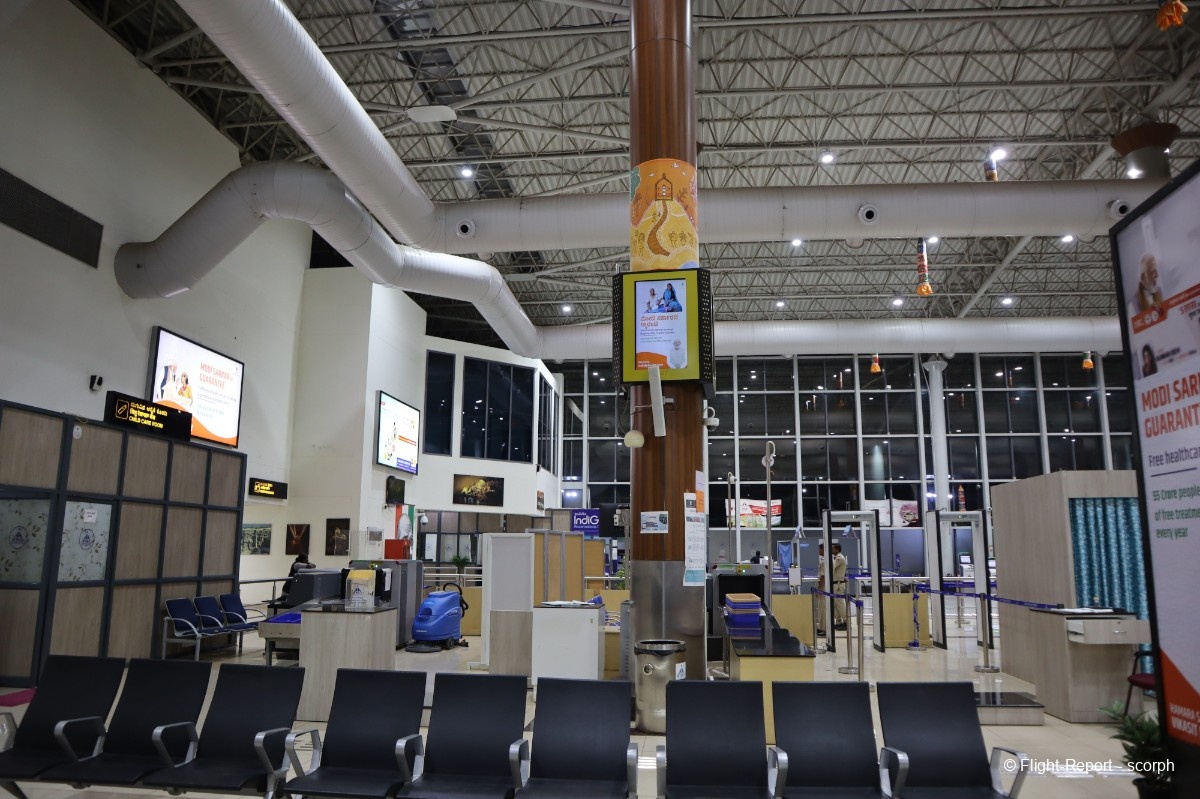
Inside, you’ll find some decorative murals showcasing Karnataka, like the Mysore Palace depicted here.
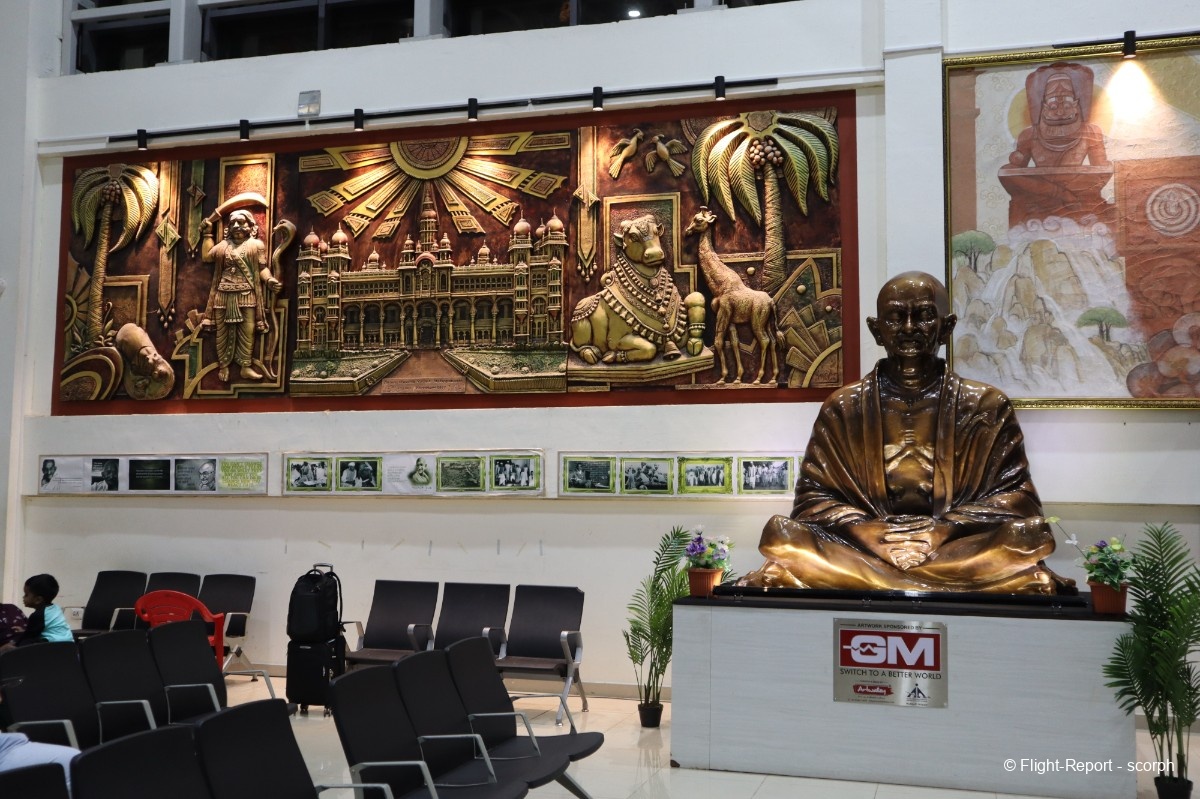
The evening FIDS, which also covers the morning flights, IndiGo operates the entire traffic.
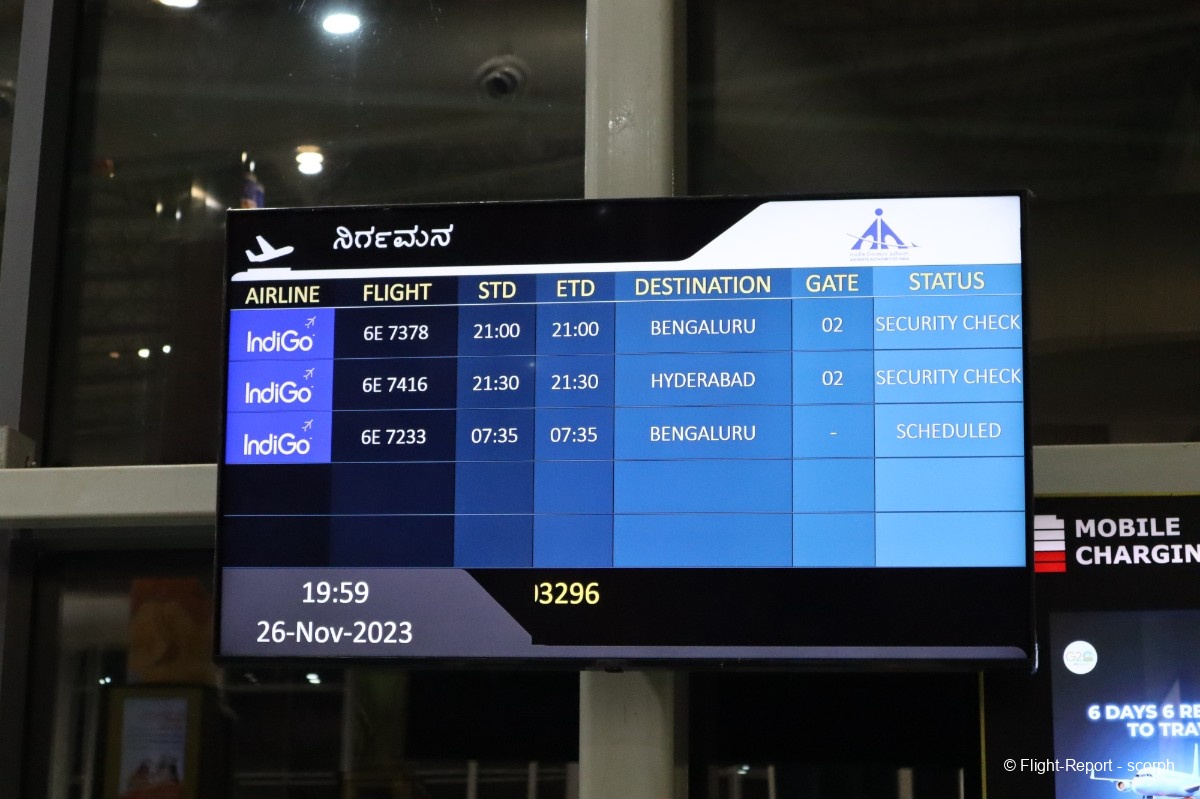
Our aircraft has just arrived right on time from Bangalore, and passengers are currently disembarking.
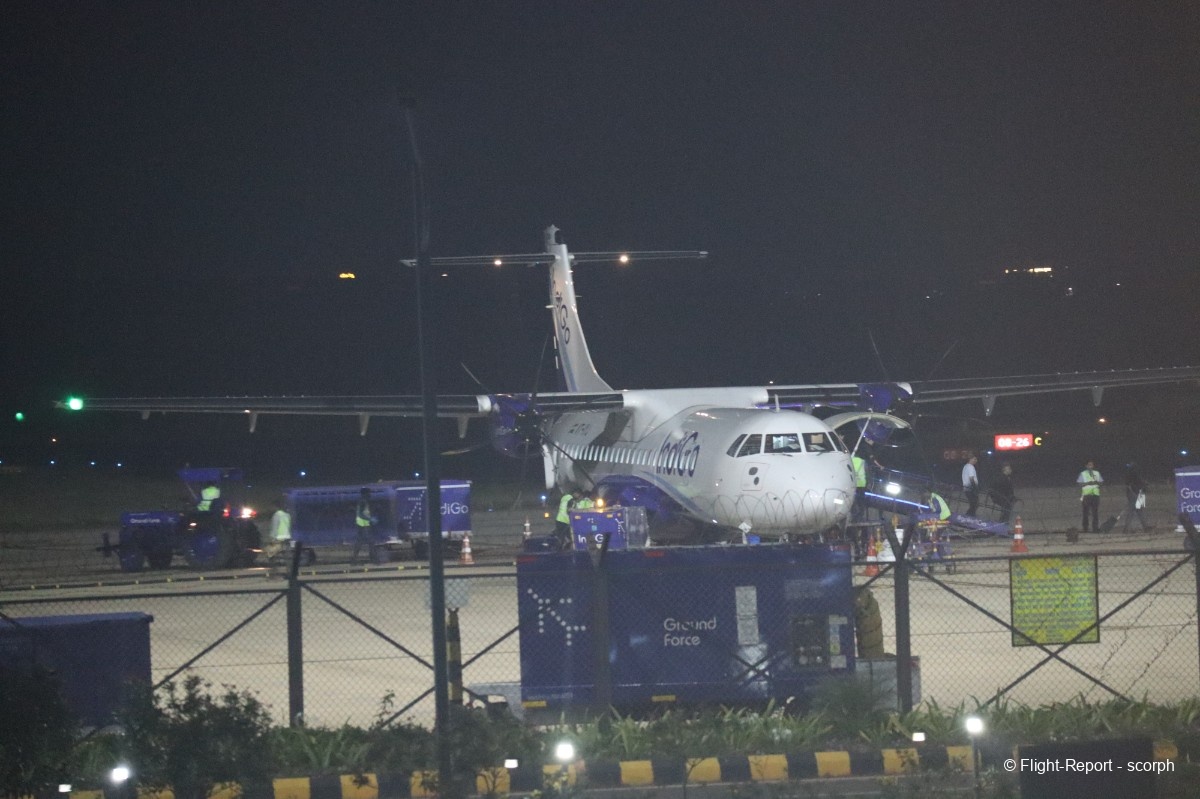
Our boarding begins shortly after. We’re invited to board the passenger bus among the first. In fact, passengers in rows 1 to 10 are called first, likely for weight distribution reasons. Once again, it’s worth noting that the buses used are electric.
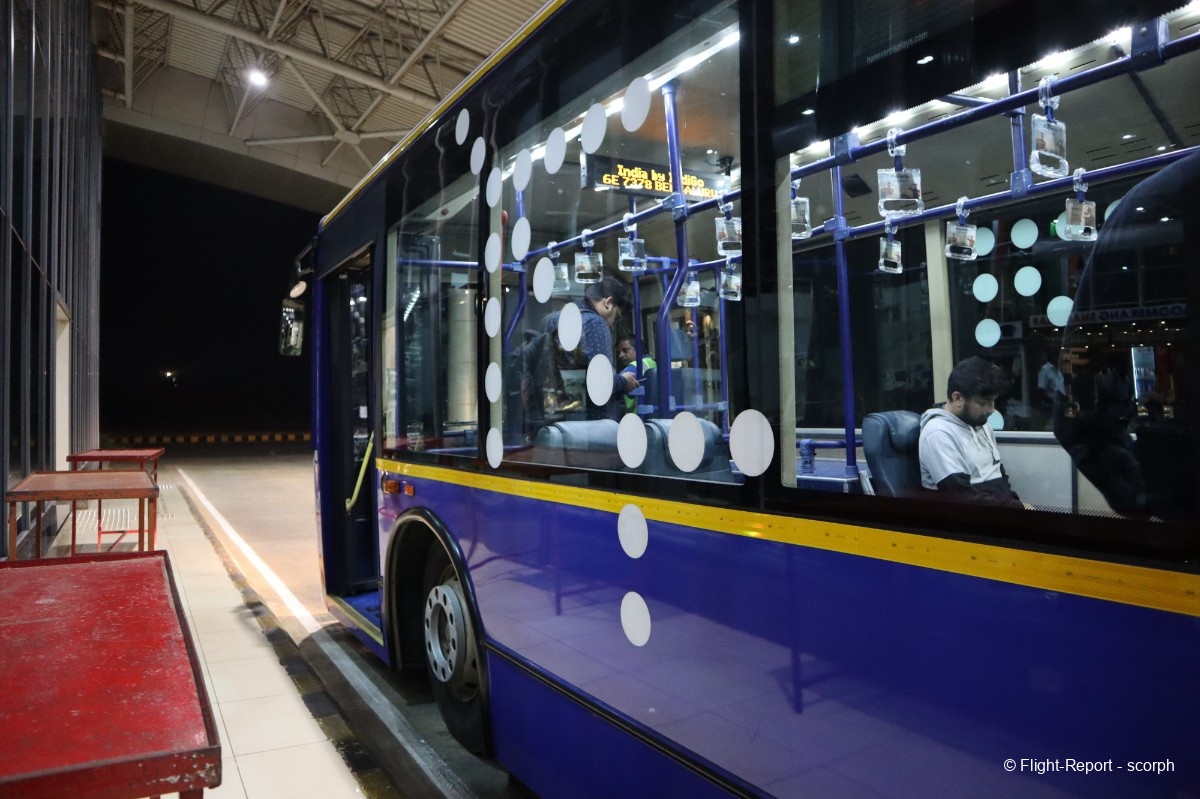
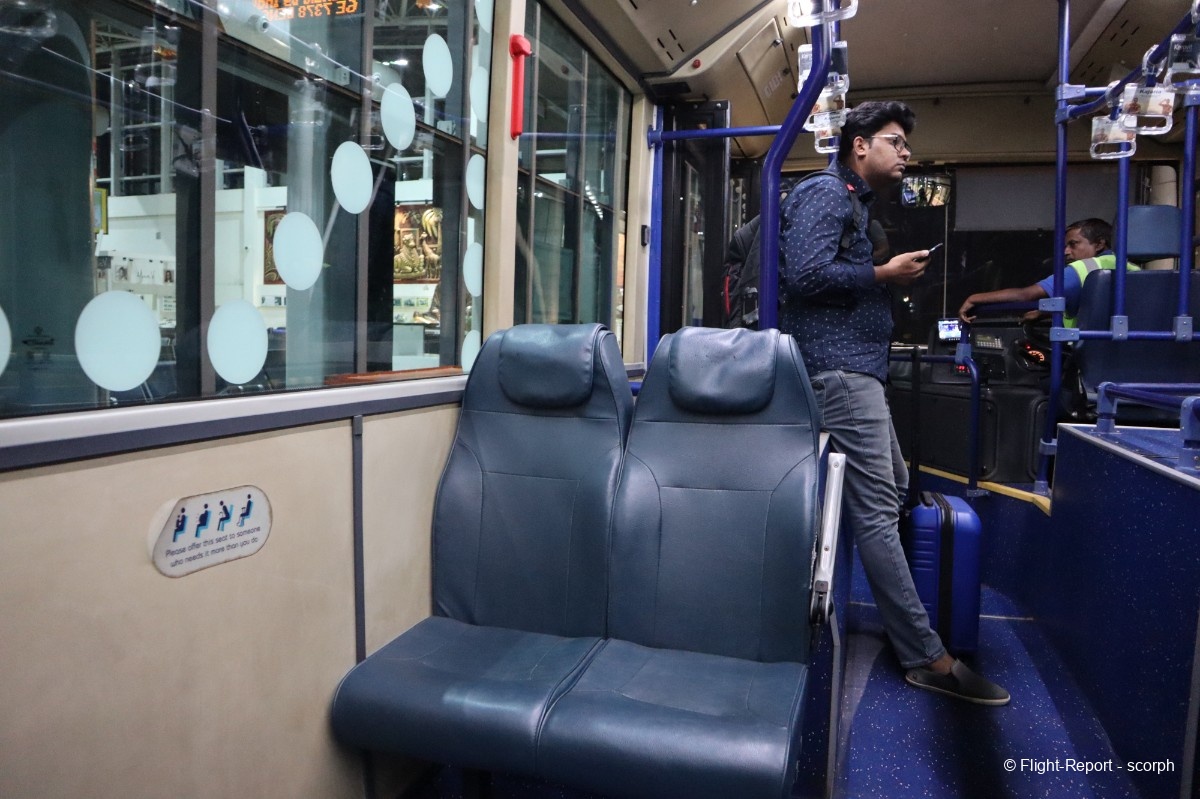
The walk to our aircraft today is quite short, just about a hundred meters. Our ATR for the day is a latest-generation ATR 72-600. Registered VT-IYJ, it was delivered five and a half years ago. A small special detail: this is the 1,000th ATR 72 delivered by the Franco-Italian aircraft manufacturer, although unfortunately, there’s nothing visible to mark this milestone.
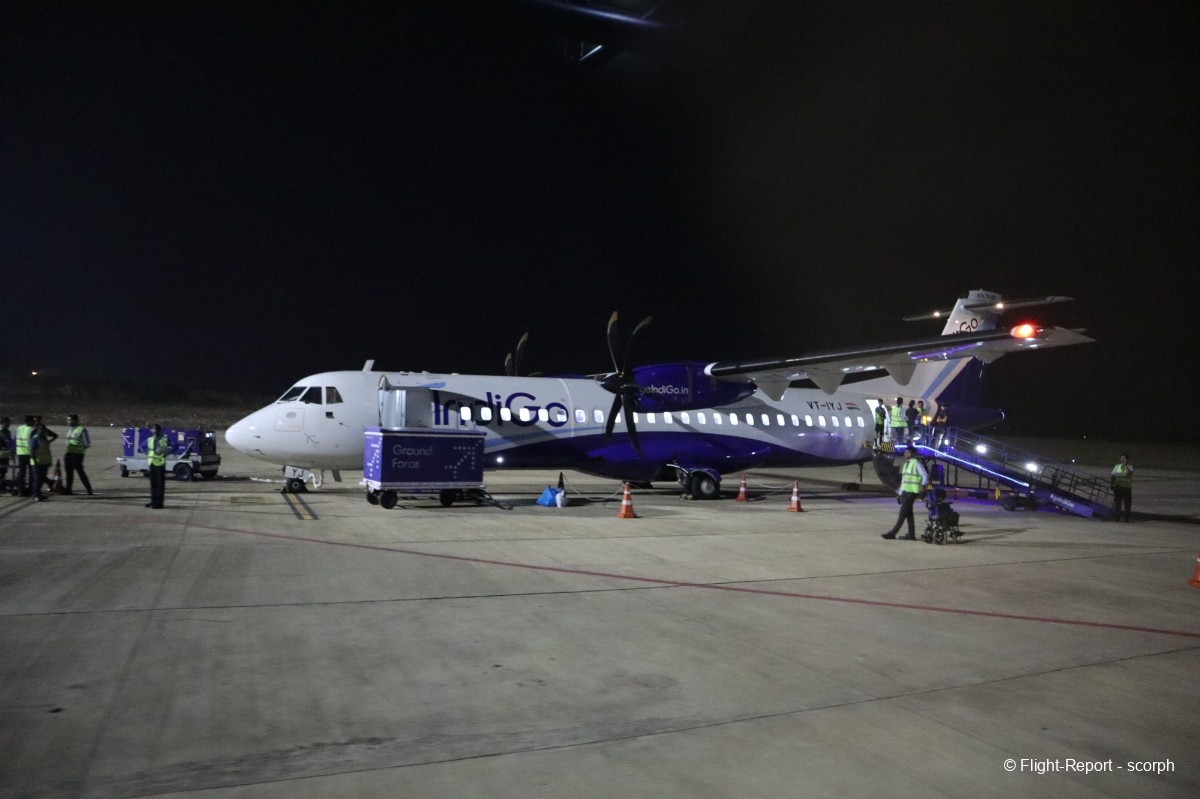
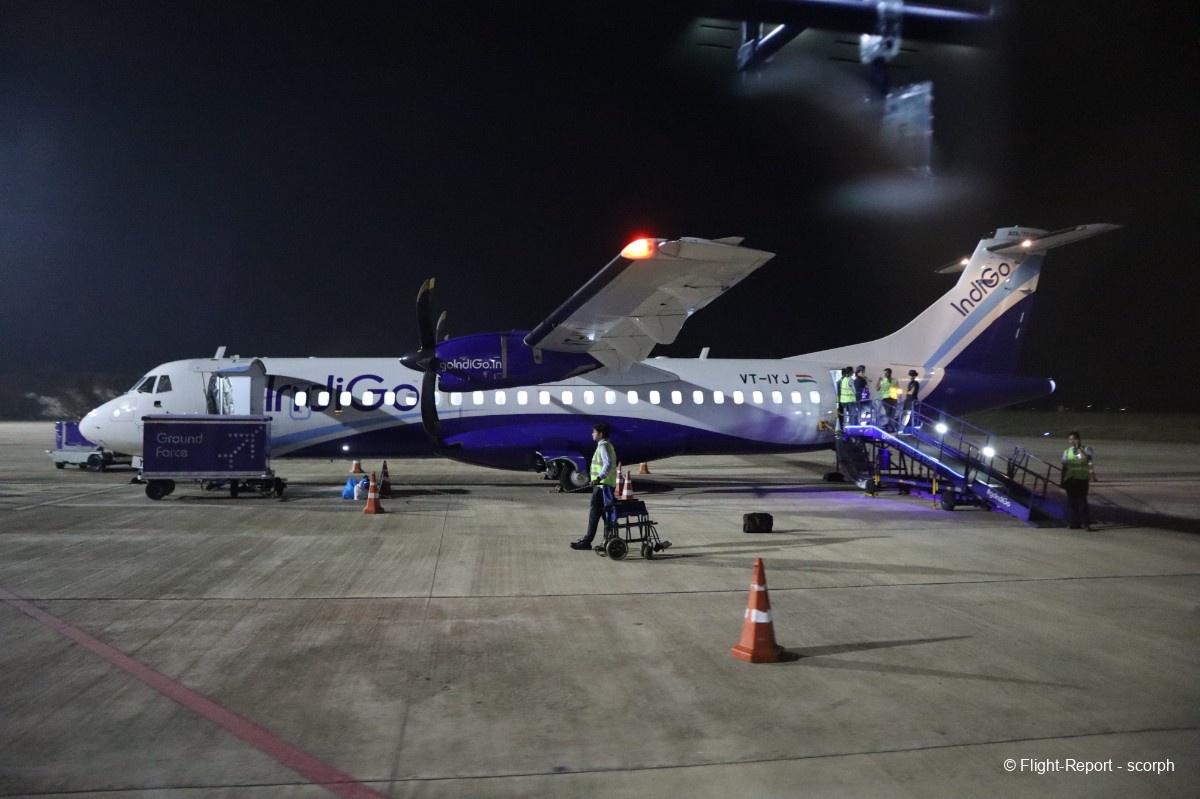
We board using a small, mobile inclined ramp, handy for helping passengers with reduced mobility. If there’s one mode of transport truly adapted for people with disabilities in India, it’s definitely the airplane. I take the chance to snap a fuselage shot while watching luggage being loaded through the cargo door at the front of the aircraft.
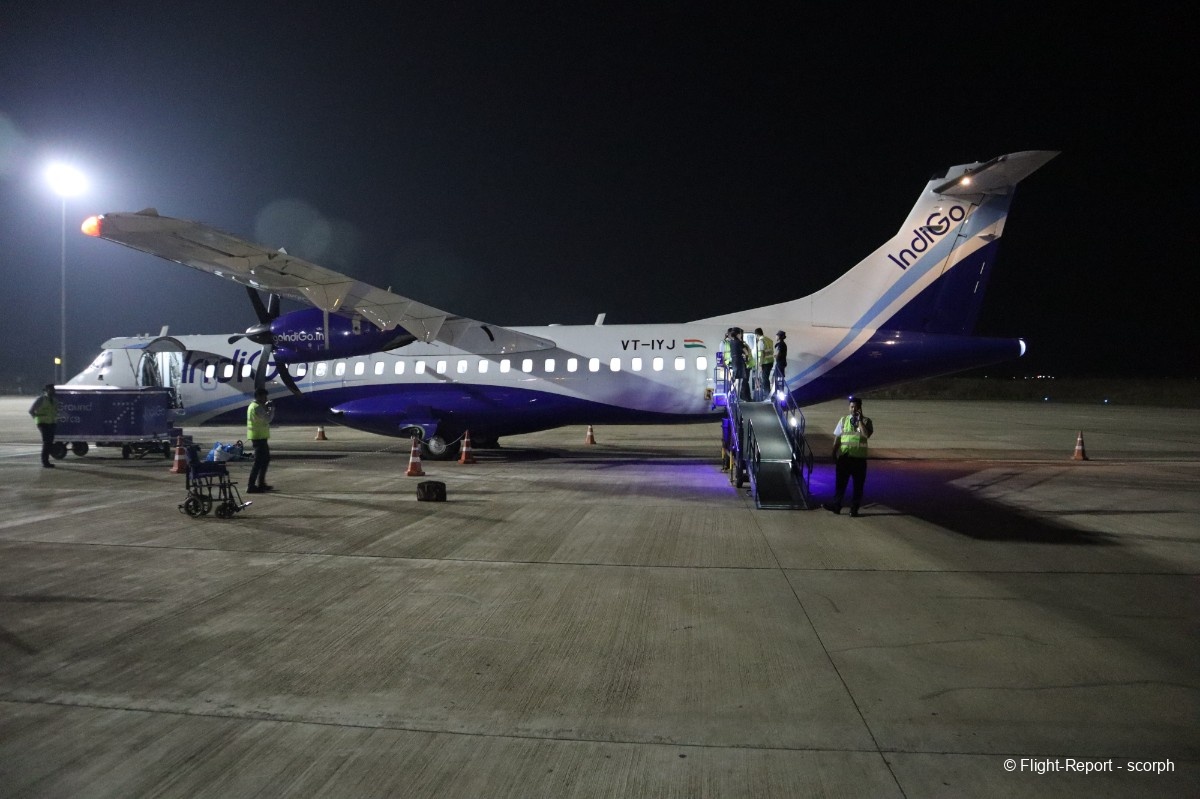
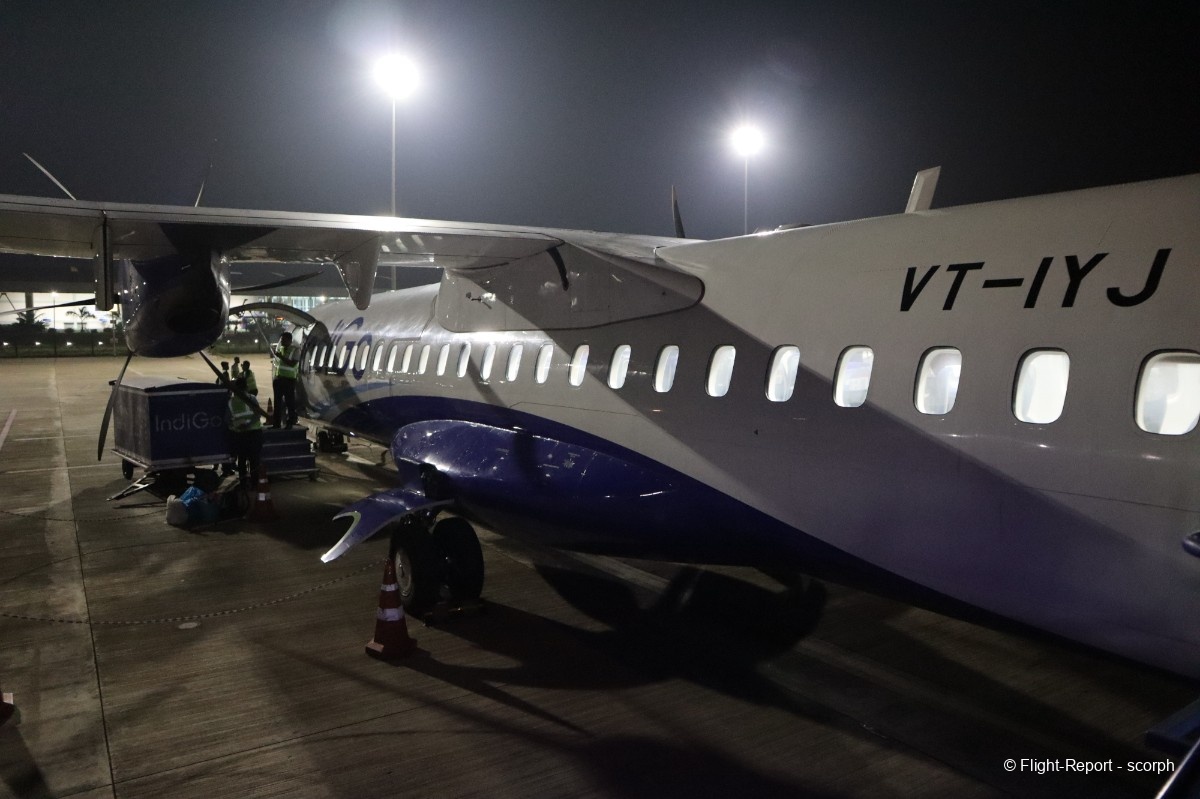
On board IndiGo ATR72
The onboard welcome is polite and friendly, with our crew once again being an all-female team from 6E. I recognize the same cabin as on my previous flight on the same aircraft type a couple of weeks ago, featuring very slim seats that allow IndiGo to operate this aircraft at the maximum capacity certified that is, 78 seats.
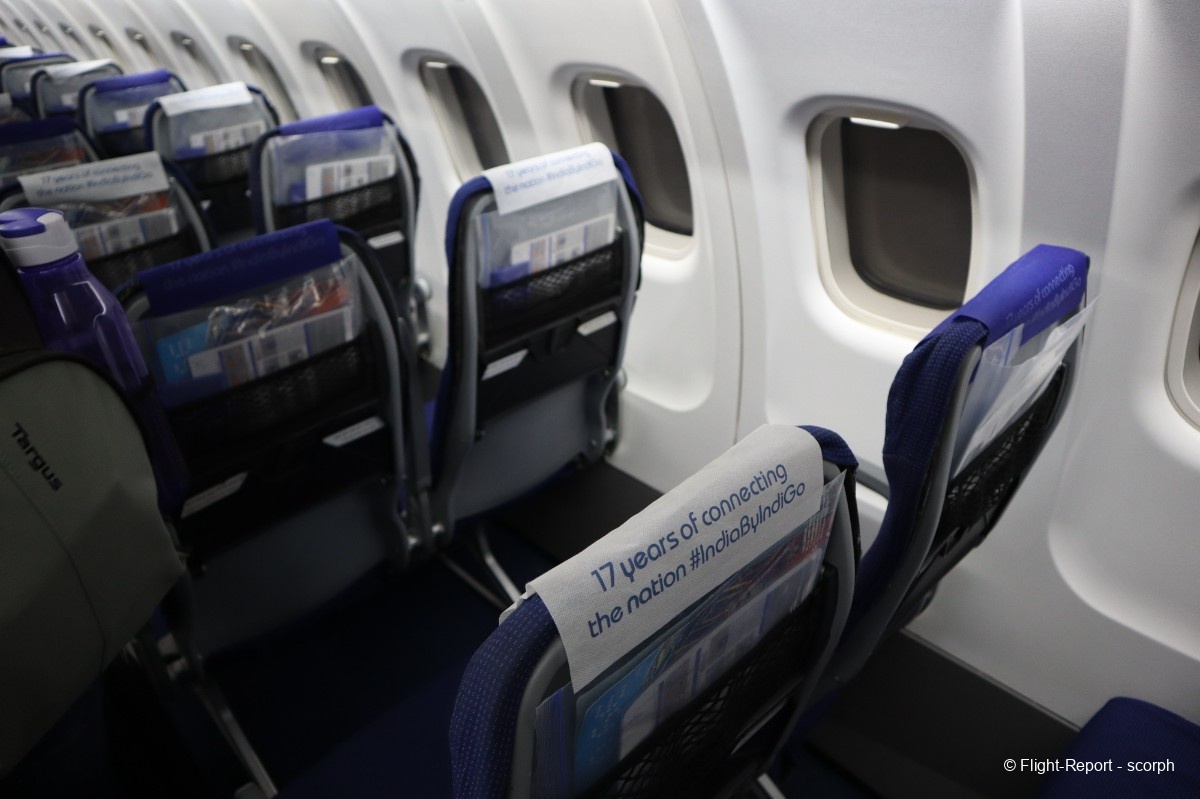
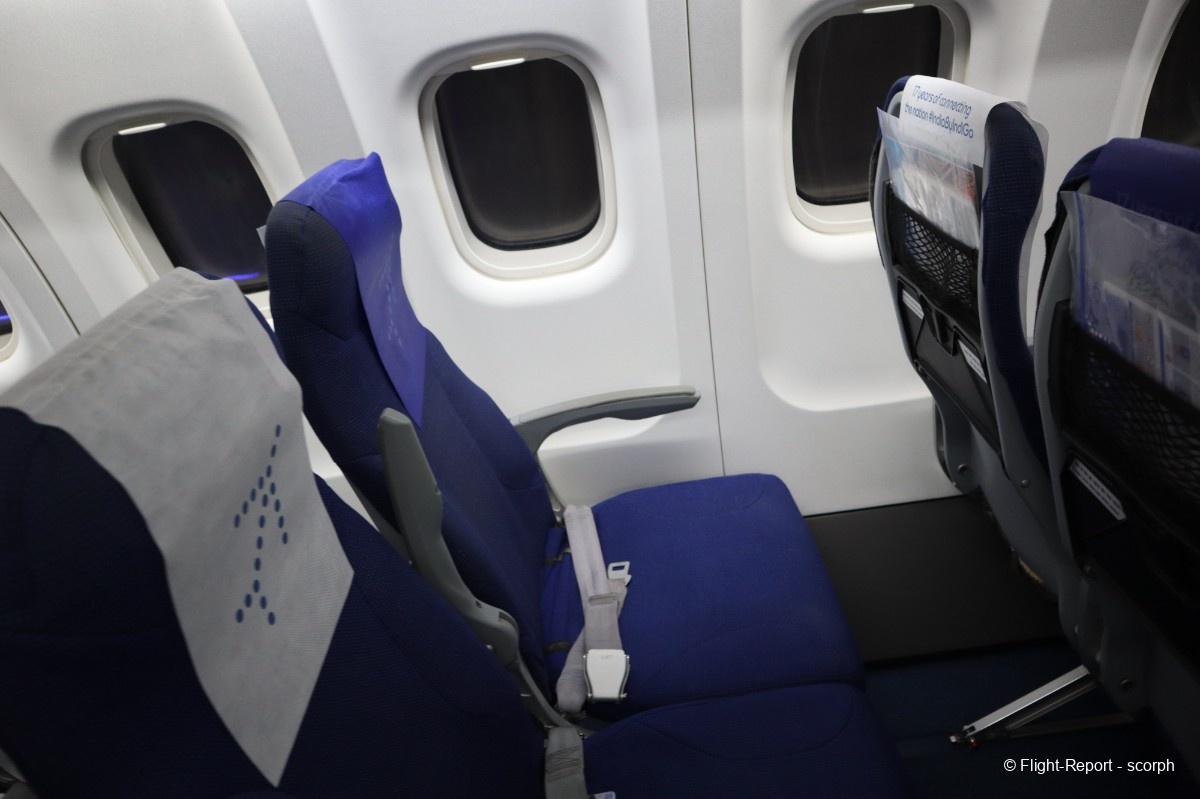
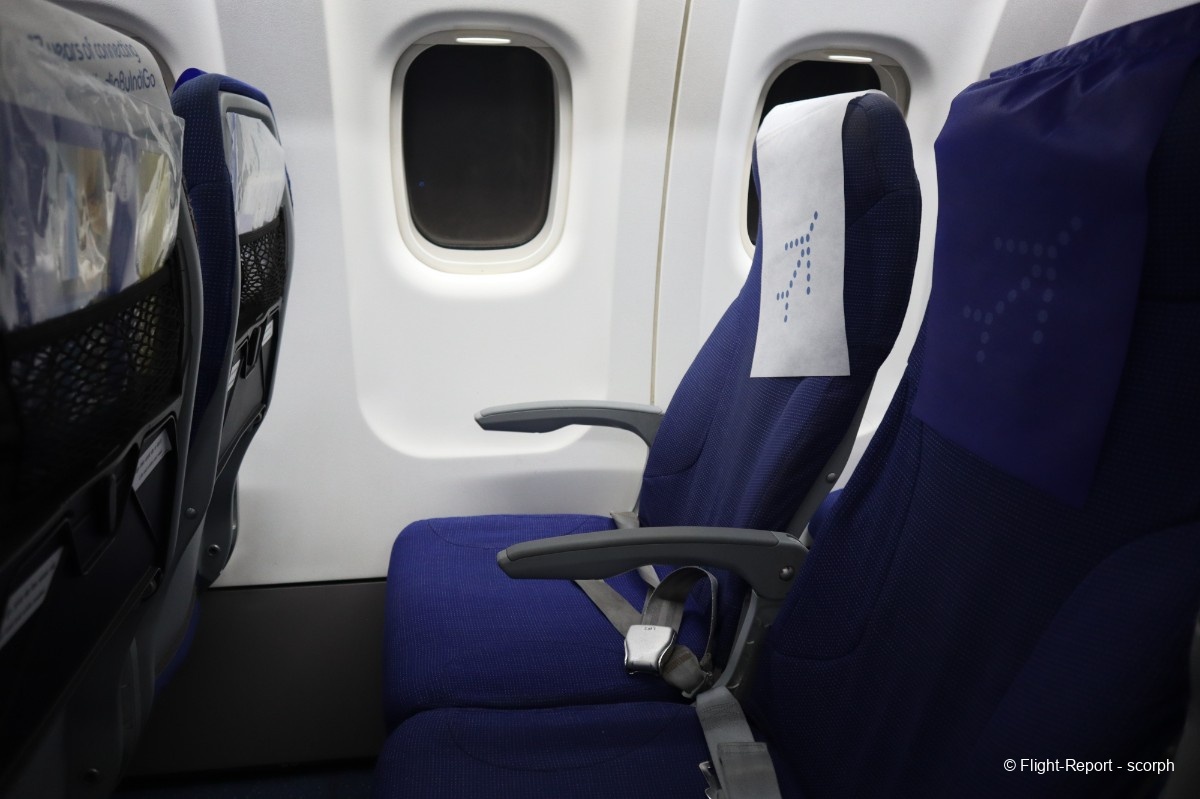
For me and my colleague traveling with me, it will be row 4 this evening.
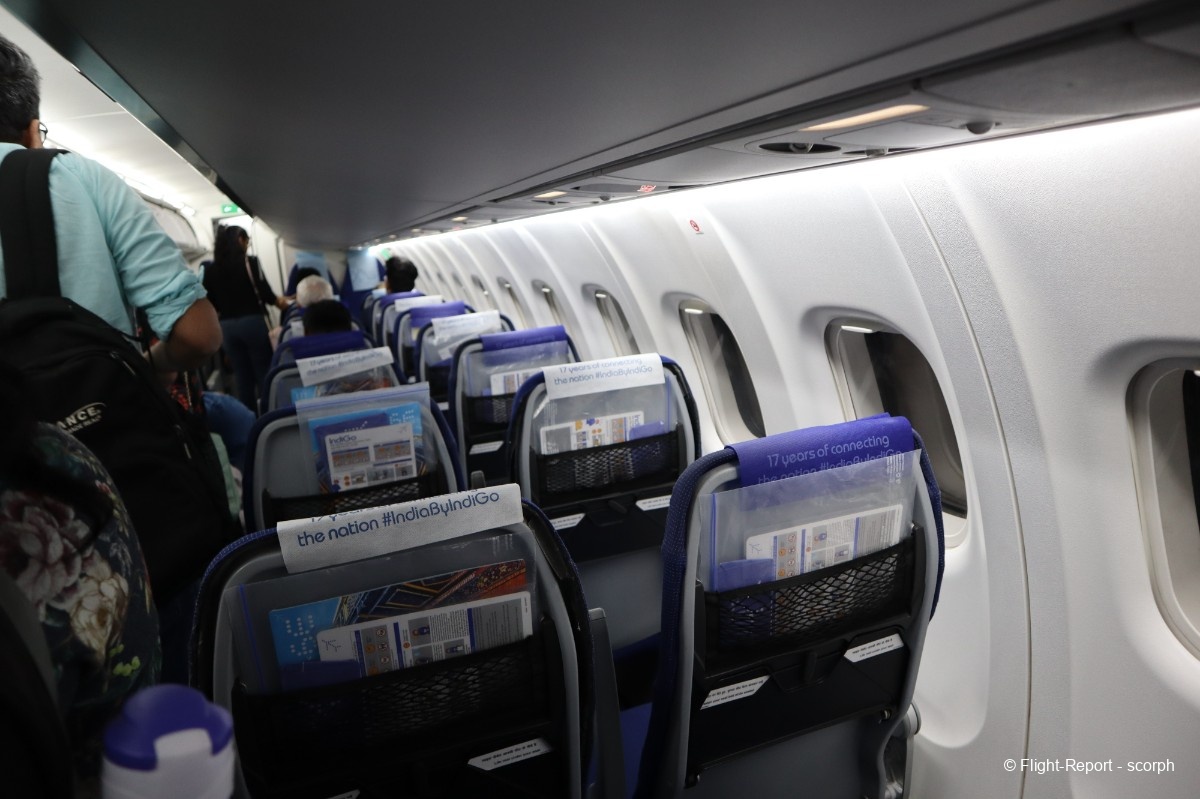
Despite the high-density cabin, the pitch remains acceptable at 29 inches thanks to the really slim seats, where every element seems carefully designed to minimize weight.
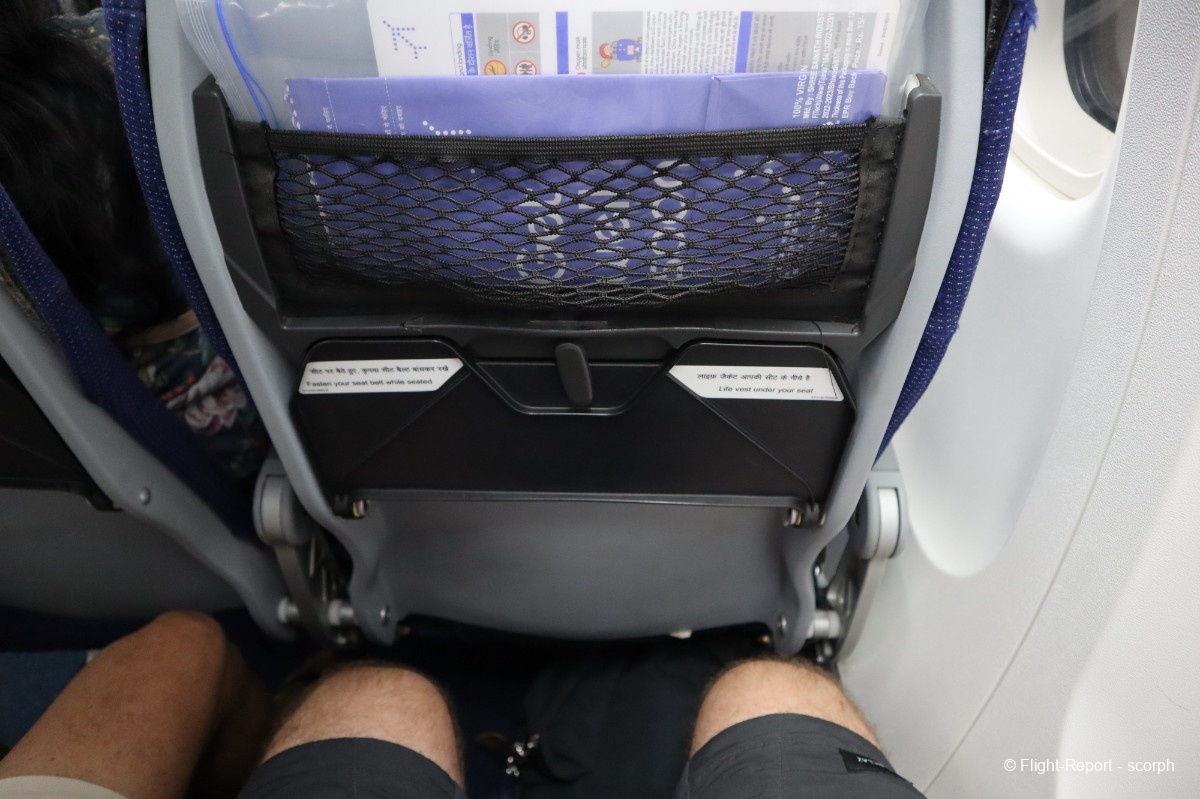
The overhead lighting is the latest ATR standard.
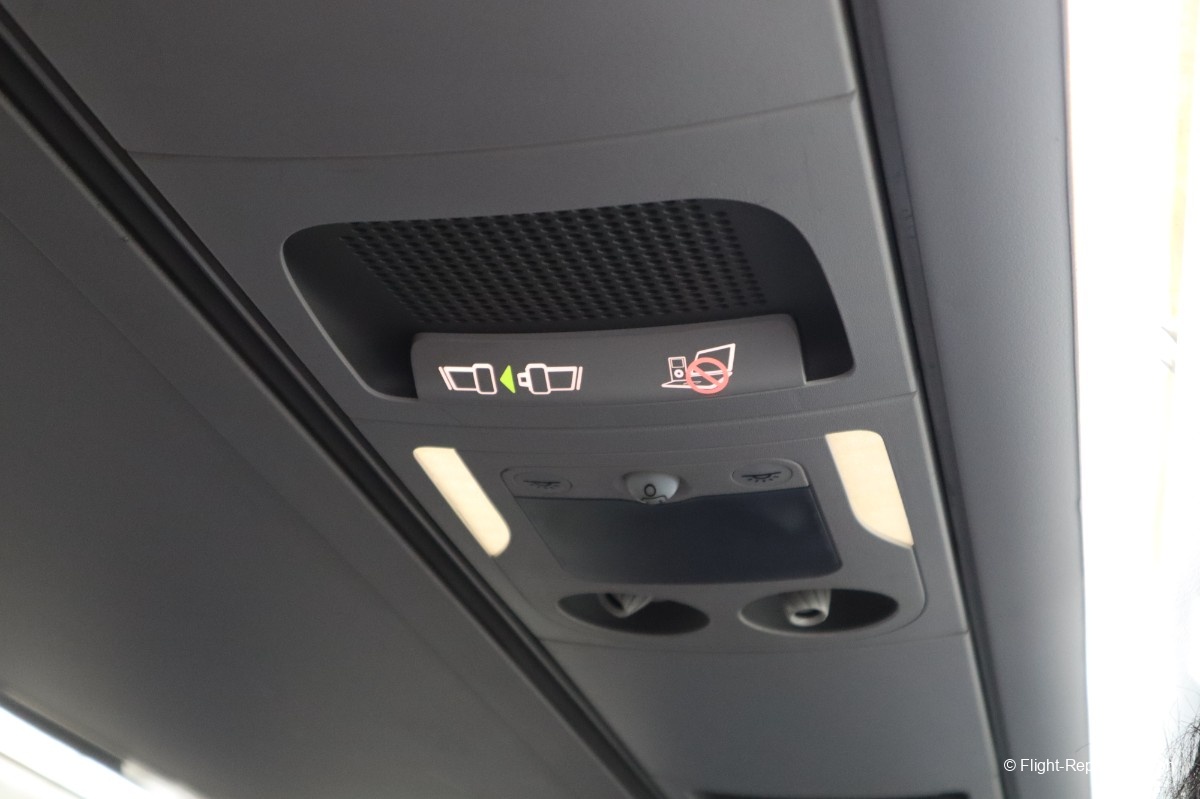
Boarding finishes quickly, and we start taxiing soon after the cabin crew completes the safety demonstrations. No need to push back, the parking area is spacious enough for us to depart under our own power.
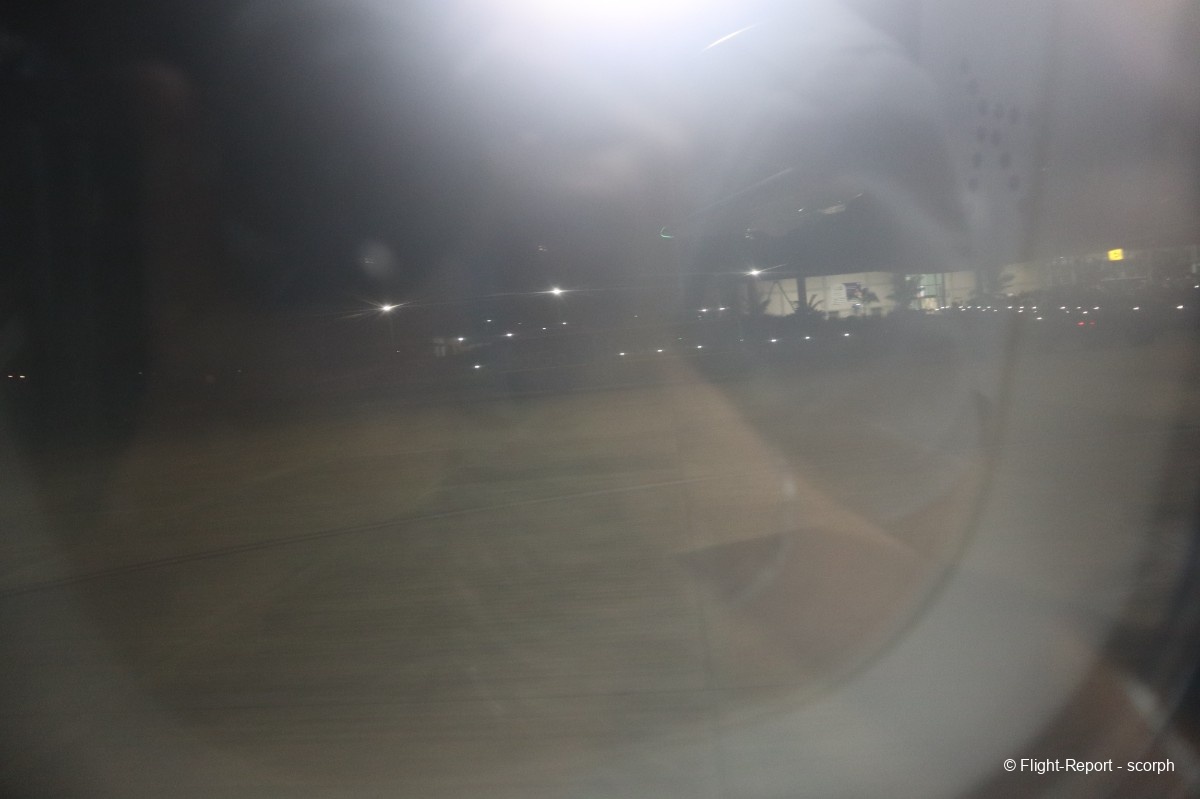
We’ll be departing from runway 08, which will offer us a stunning view of Hubli, a "small" city of about one million inhabitants as its lights pass beneath our wings during our climb.
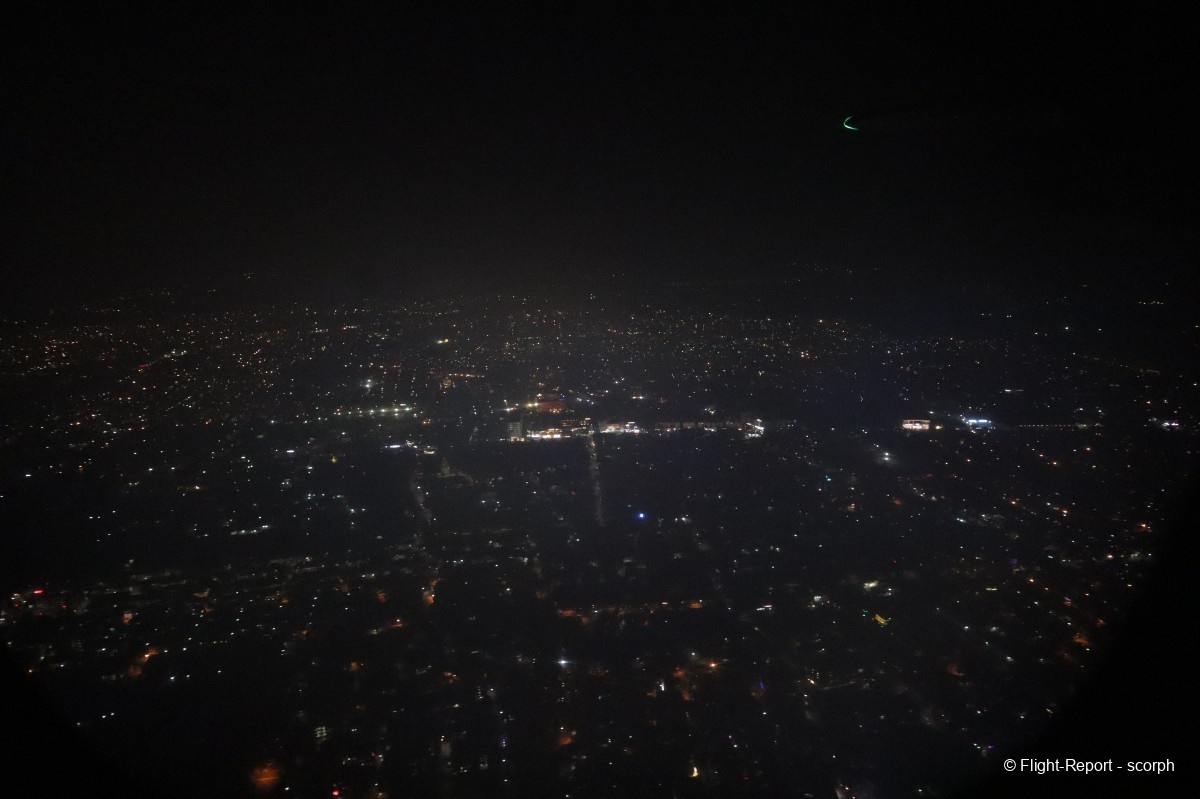
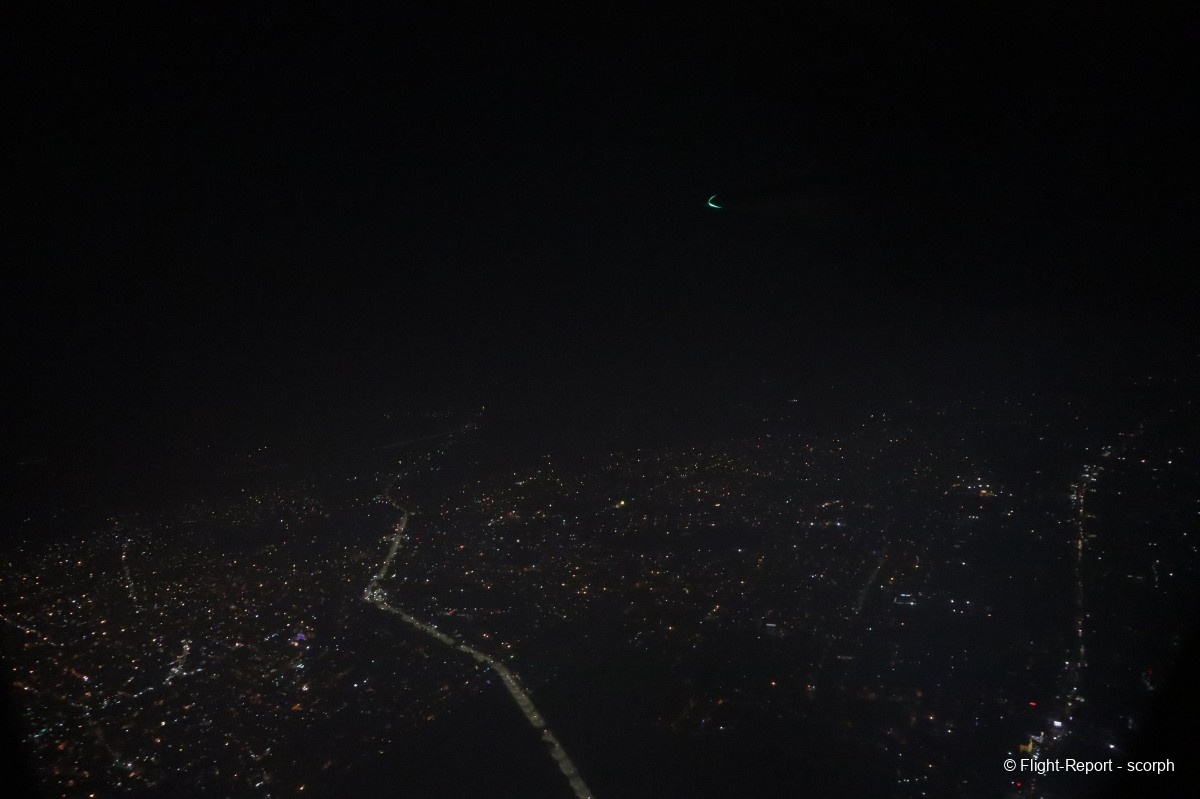
The safety card will be available in the seat pocket in front of you. Surprisingly, the in-flight magazine was missing from the pocket on this flight.
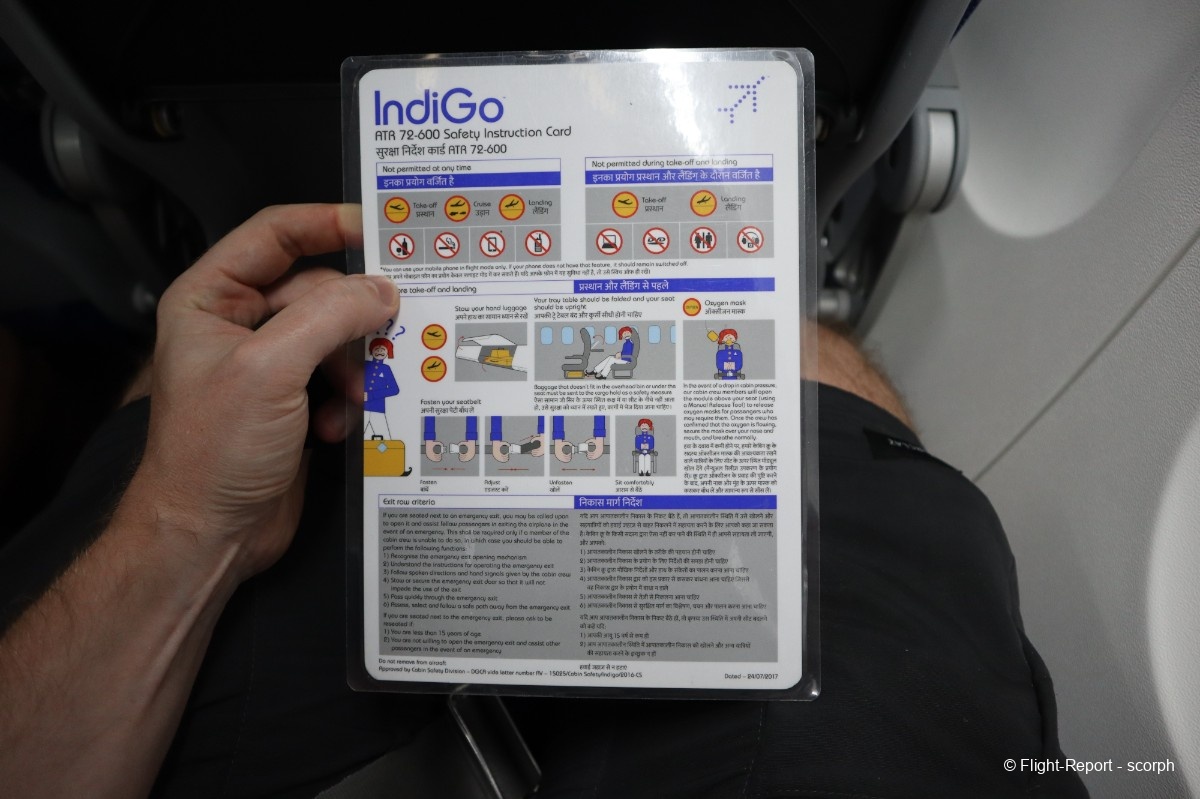
But it was present on the other seats, the flight attendants made a round with the trolley, mainly to distribute the few pre-ordered meals. I didn’t see any sales happening during the flight.
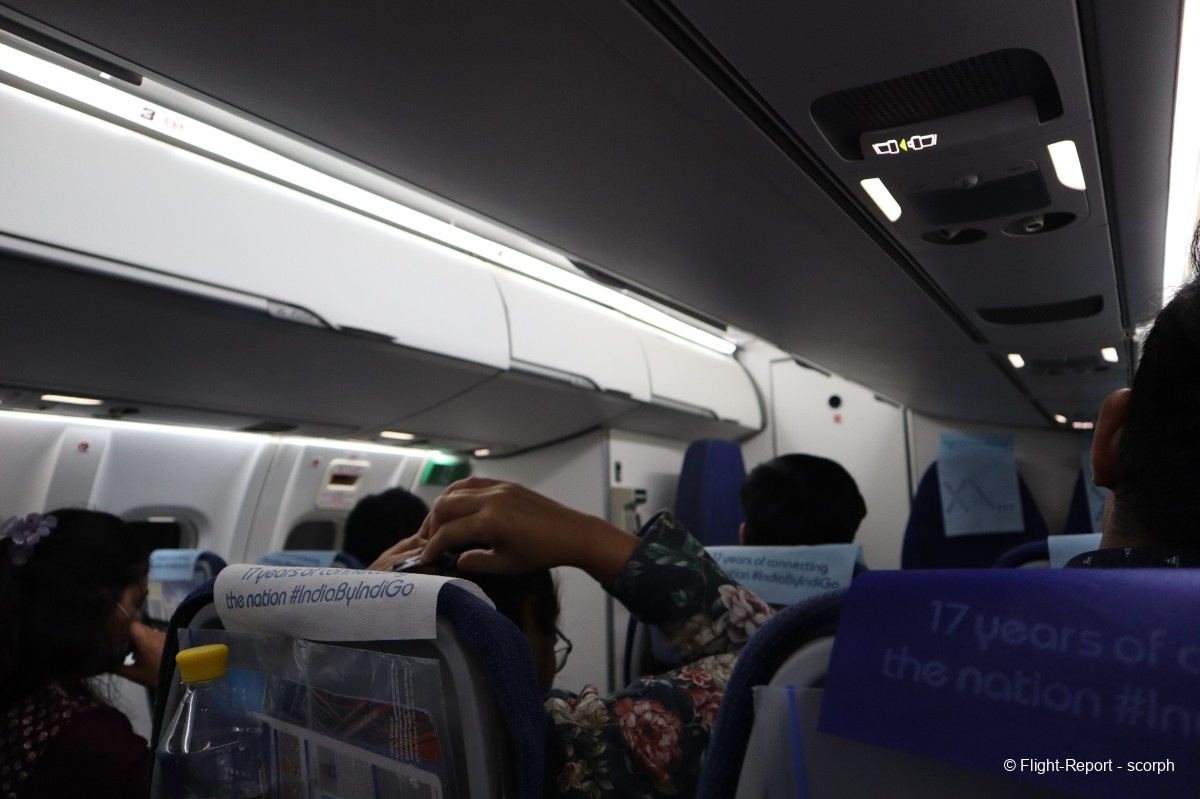
They then made a second pass with cups and bottles of water, offering this free drinks to passengers who wanted them. Along the way, there was a little game based on three fun facts where you had to guess which one was false.
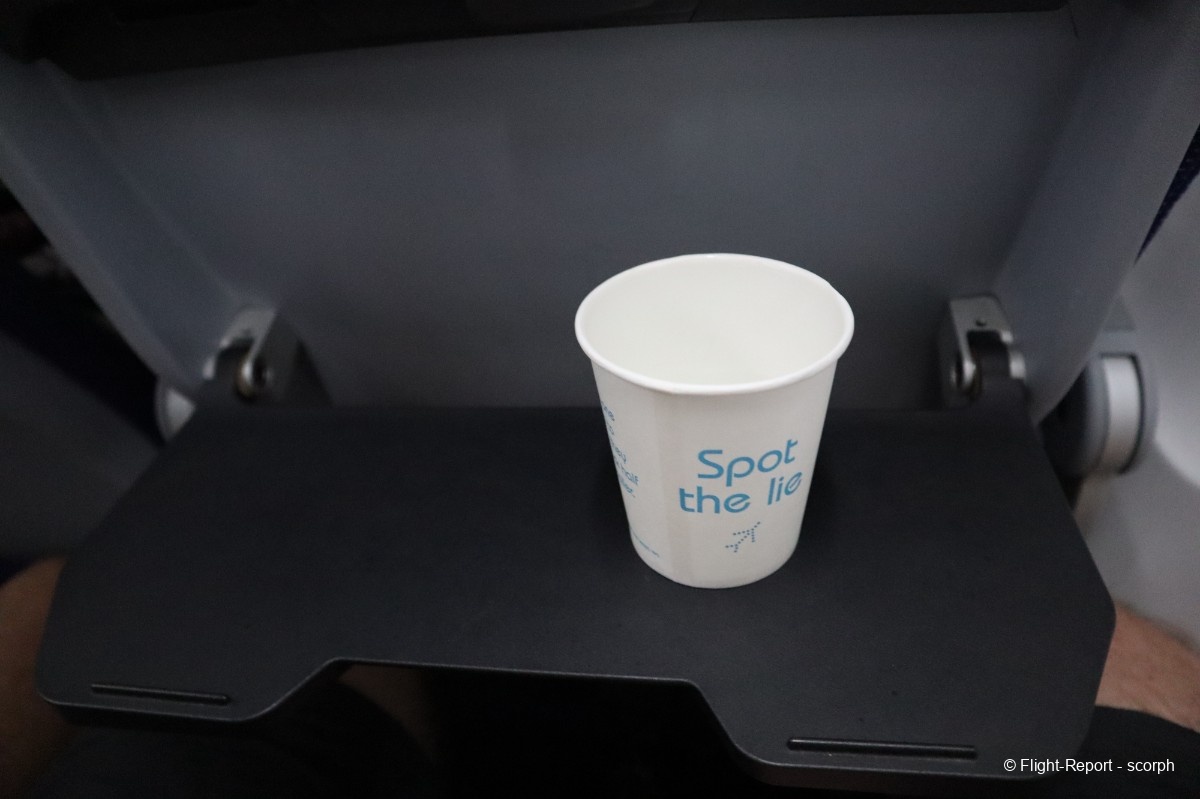
The Flightradar24 track of our flight today shows a direct route but flying quite low, cruising at only 11,000 feet.
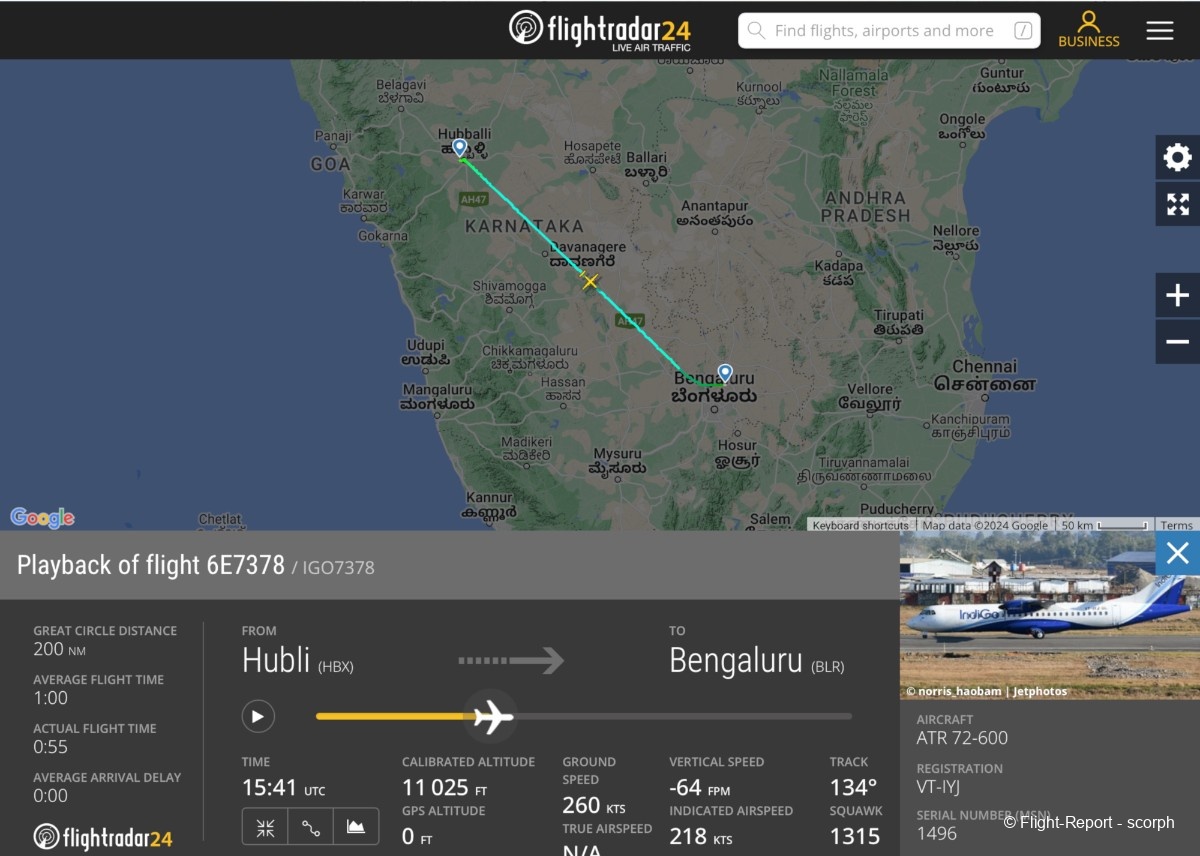
After less than an hour of flight, we begin our approach to Bangalore airport. As is often the case, it will be an approach from the east onto runway 09L. In the distance, you can see the lights of the northern suburbs coming into view.
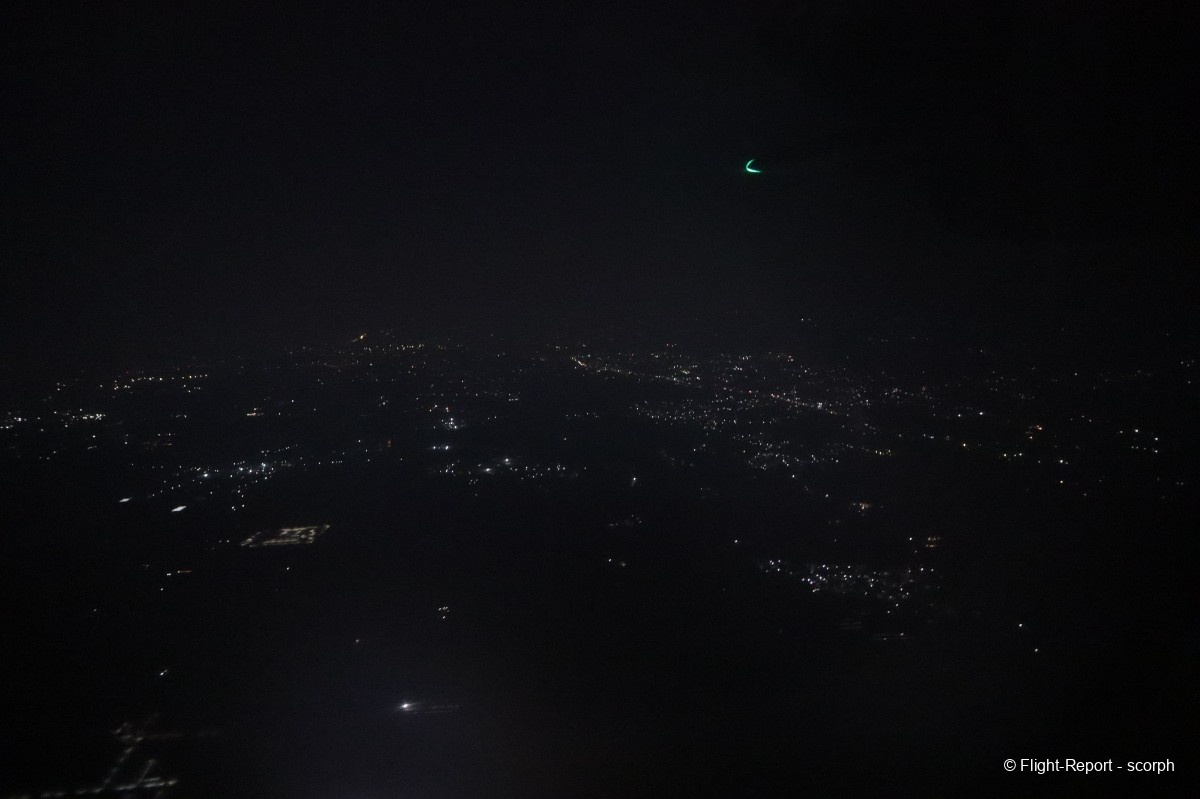
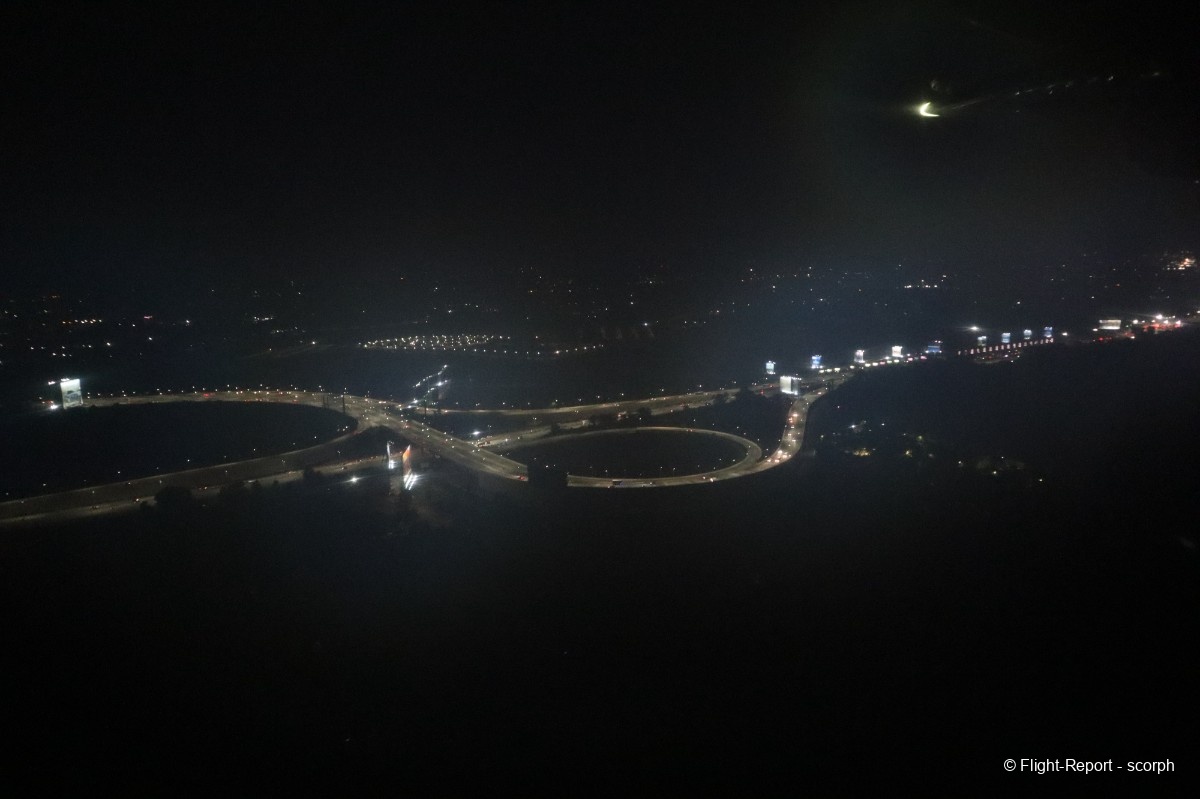
Landing on Bangaluru night
The taxi to our parking spot will be short, taking us to a remote stand practically in the cargo area. We’ll be parked right next to a Boeing 737 cargo aircraft from the Indian cargo carrier Blue Dart, which apparently operates for DHL.
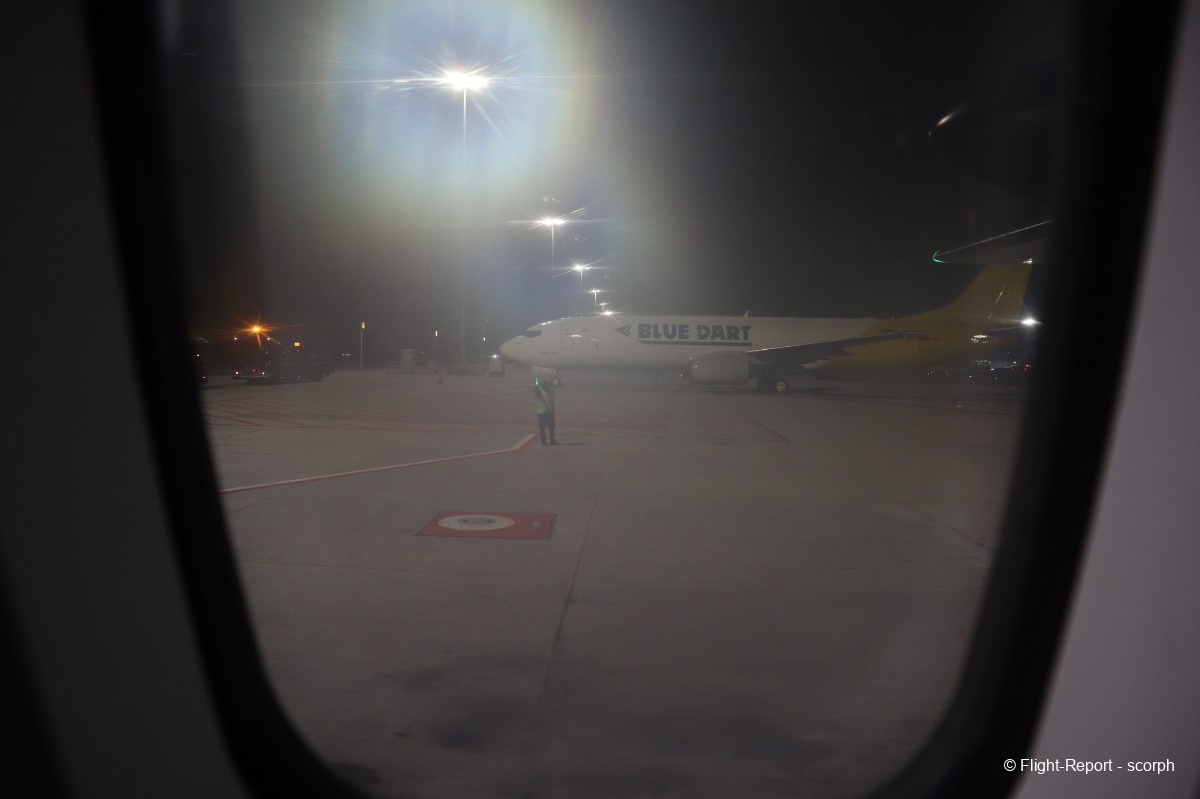
One of the advantages of the ATR is that once disembarkation starts, it’s quickly our turn to use the aisle and head for the exit even when seated near the front of the plane. A small downside: the fabric of the headrest covers feels really cheap… but then again, let’s not forget we’re flying with a low-cost carrier.
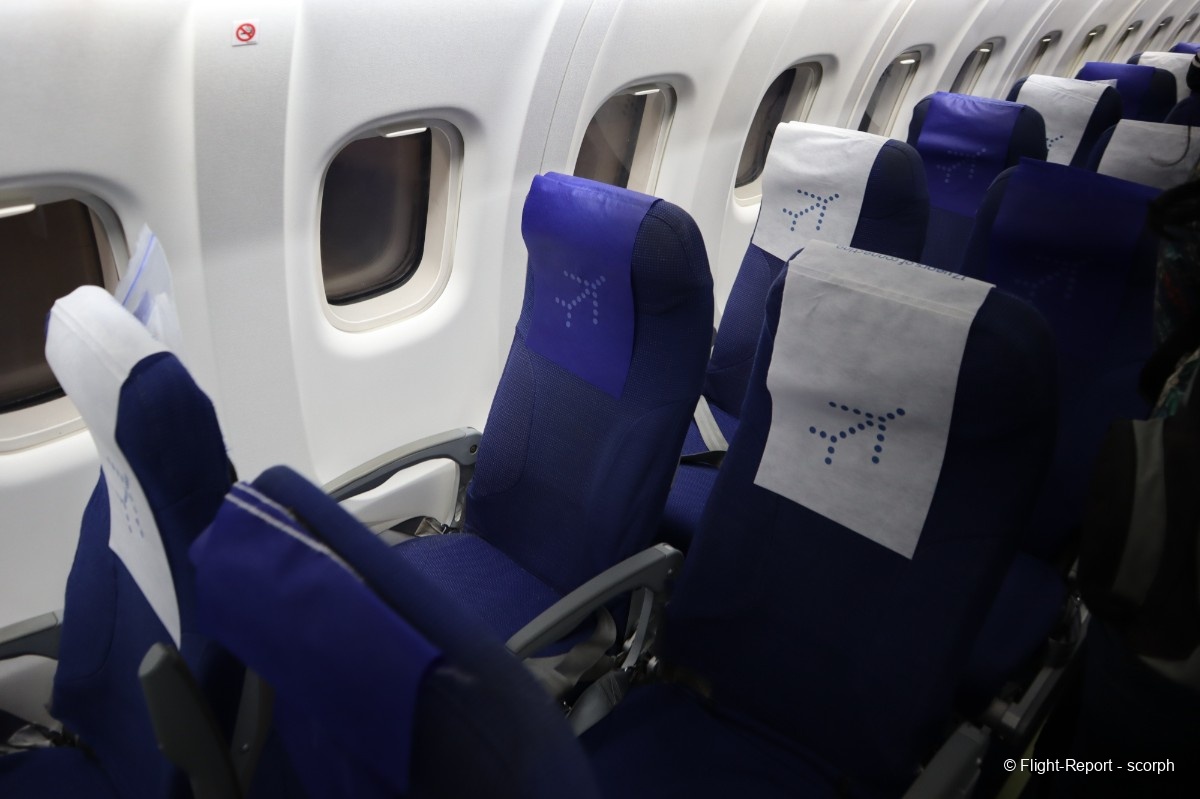
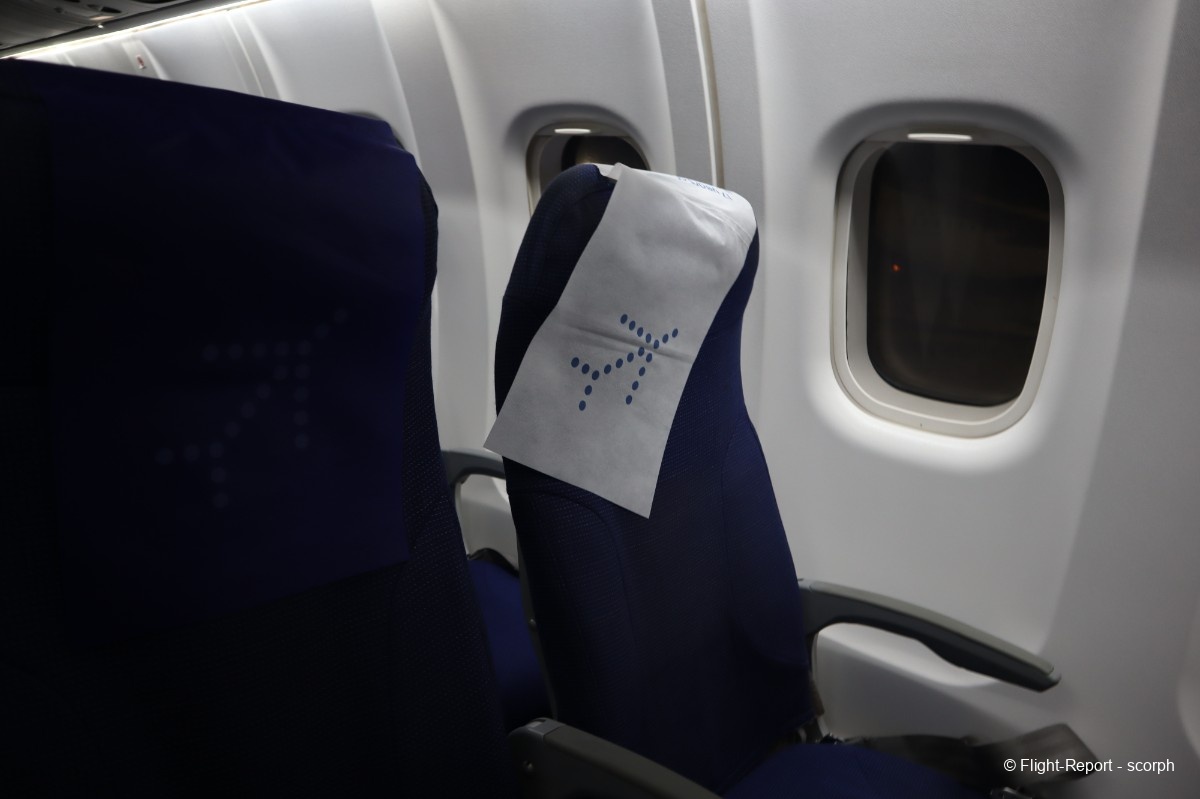
Disembarkation is via the usual dedicated stairs, but we’ll need to walk to the front of the aircraft to board the passenger bus that will take us to the terminal. Luckily, this gives me the chance to photograph our aircraft from almost every angle.
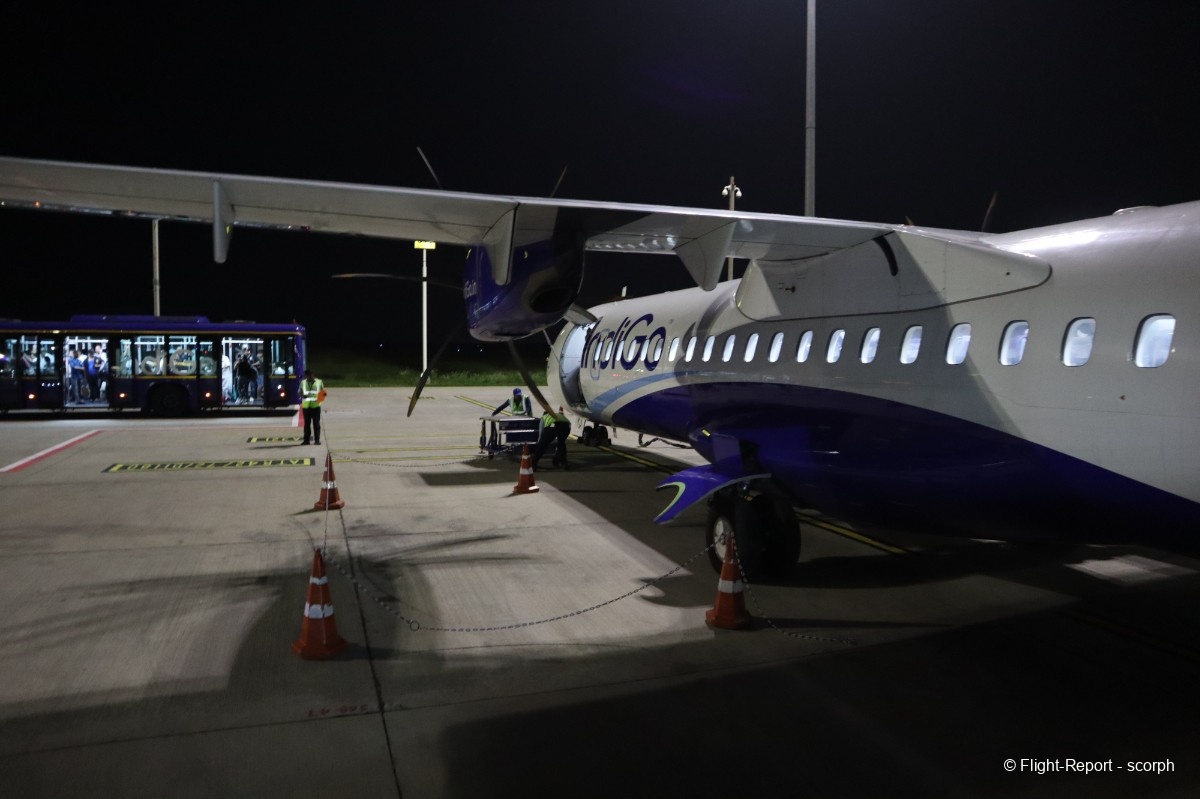
A little detail at the front of our ATR, the cargo door is open. These photos give a good sense of the propeller’s size compared to a person, measuring about 4 meters in diameter.

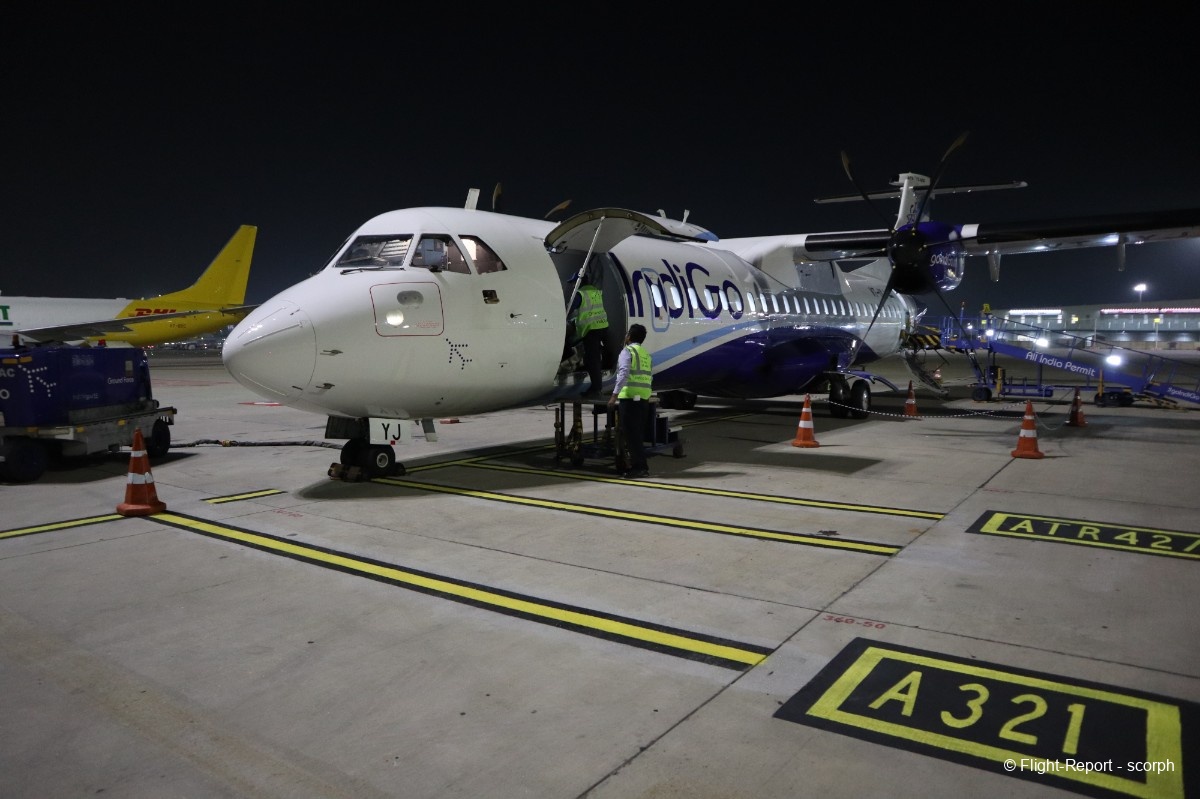
Our neighbor, seen earlier through the window, is a Boeing 737-800 freighter that will be departing later in the evening for the economic capital, Mumbai (Bombay).
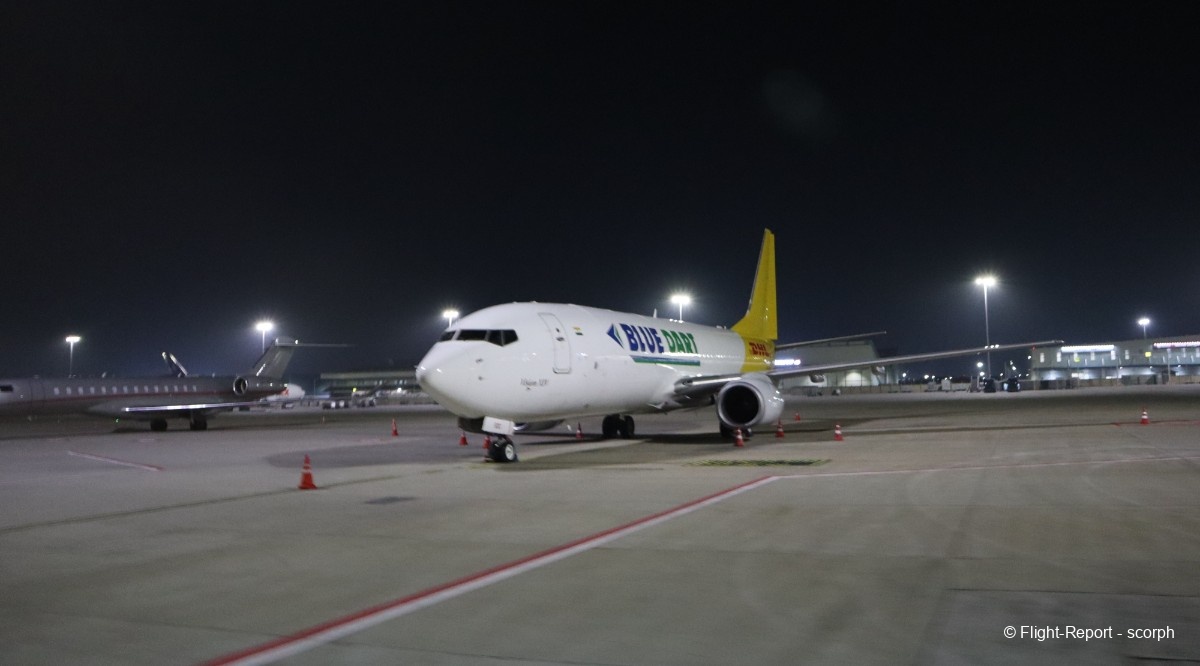
On these remote parking stands, you’ll find many aircraft stored due to issues faced by Pratt & Whitney, the engine supplier for IndiGo’s fleet. This Airbus A320neo hasn’t flown since October 6, 2023, and, as I write these lines, it still hasn’t returned to the skies.

A sister ship to our today's aircraft, which also just finished its day with a flight from Madurai, a bit of "déjà vu" for me, as that flight was my very first on an IndiGo ATR.
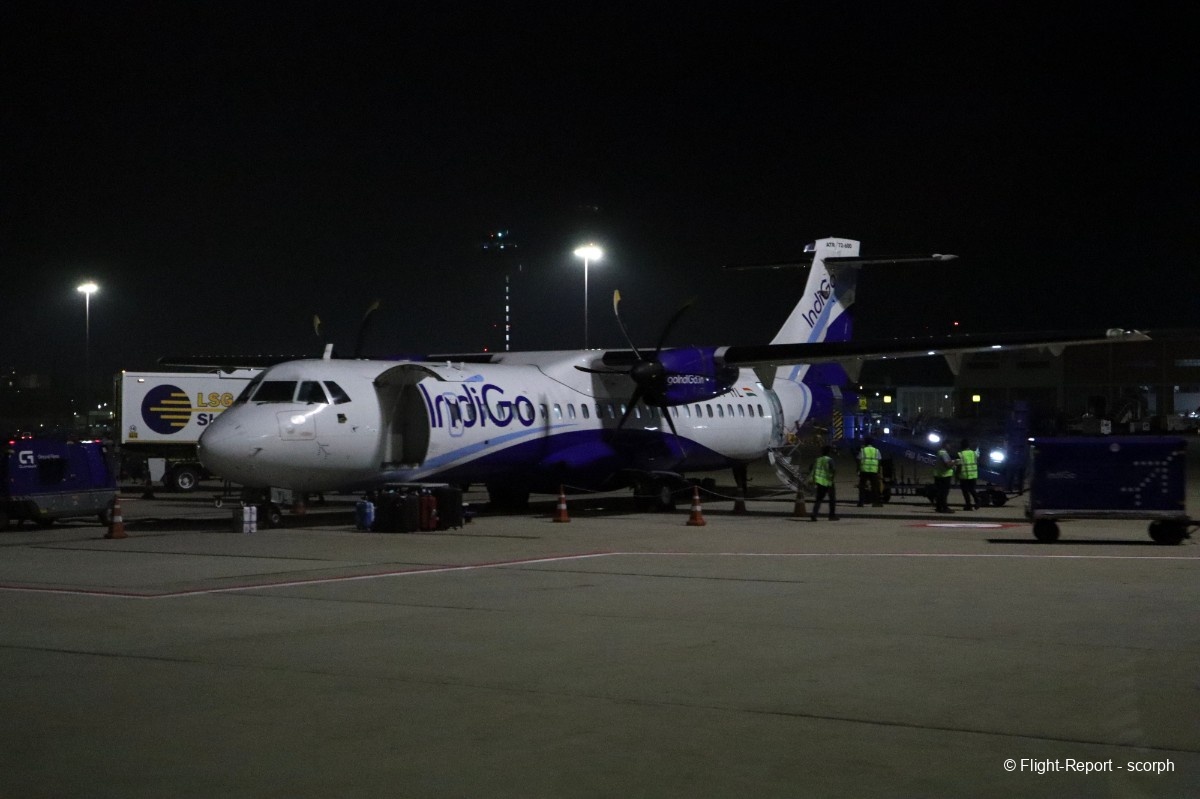
We then pass by numerous aircraft parked and stored on the remote stands, including Airbus A320neos and A321neos, as well as a SpiceJet Dash-8 Q400 whose left engine was clearly missing.
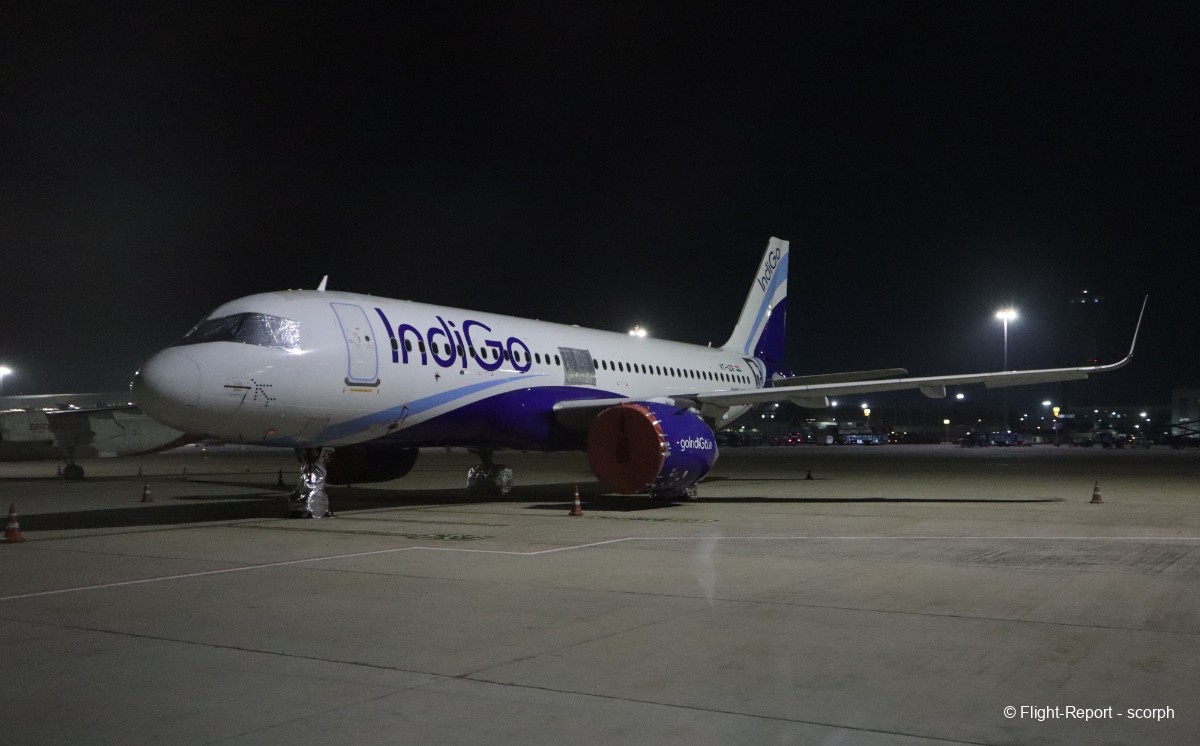
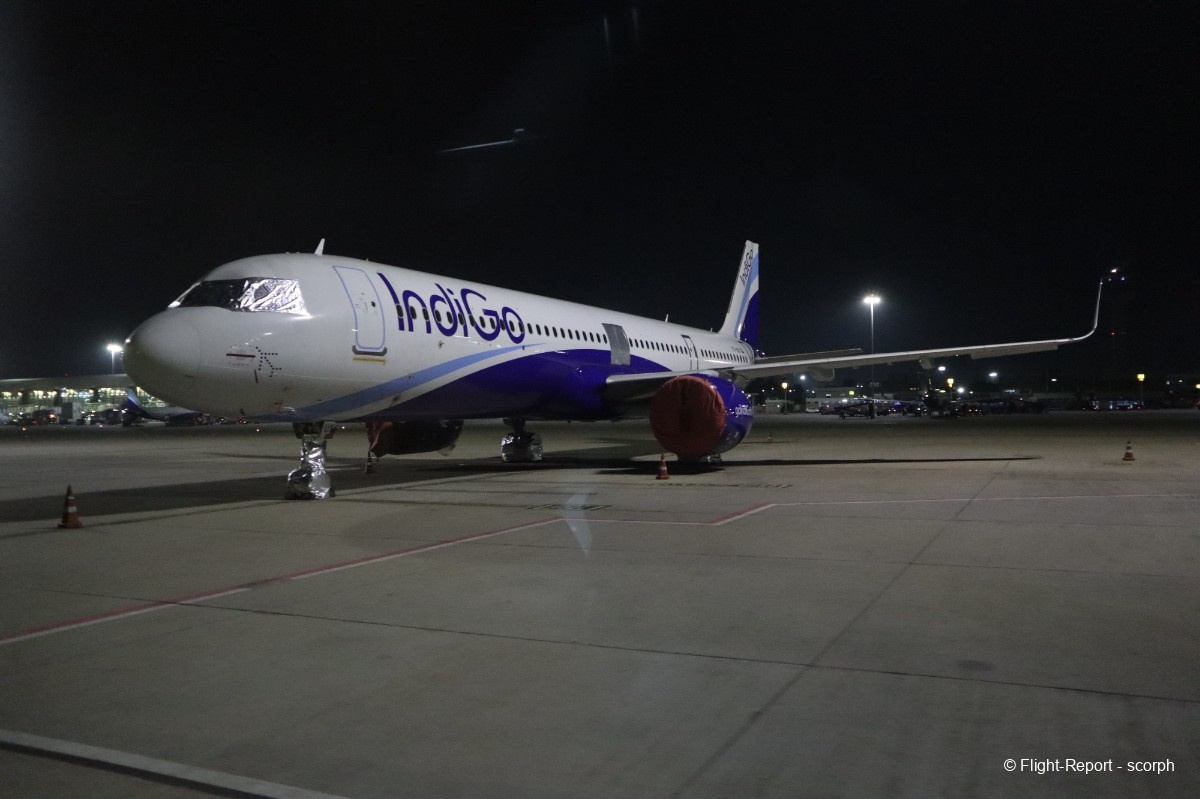
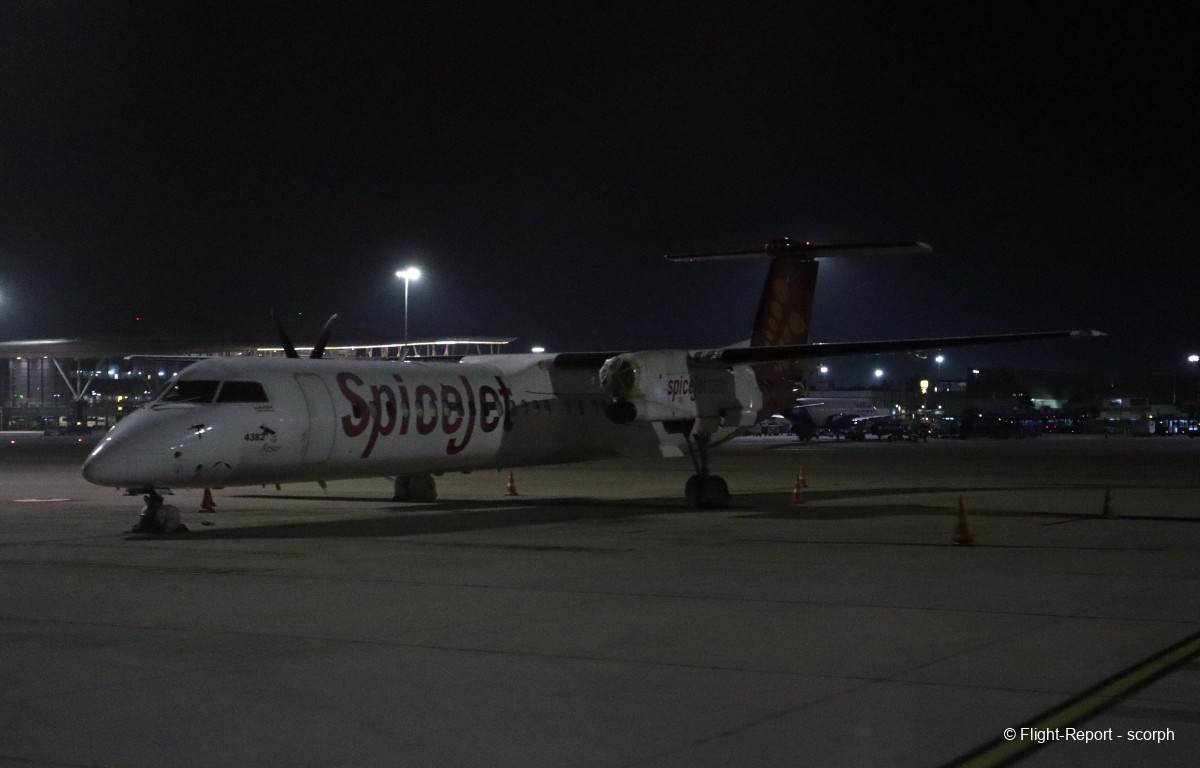
Fortunately, SpiceJet still has some aircraft in flying condition, like this Boeing 737-800 that just arrived two hours late from Siliguri (West Bengal).
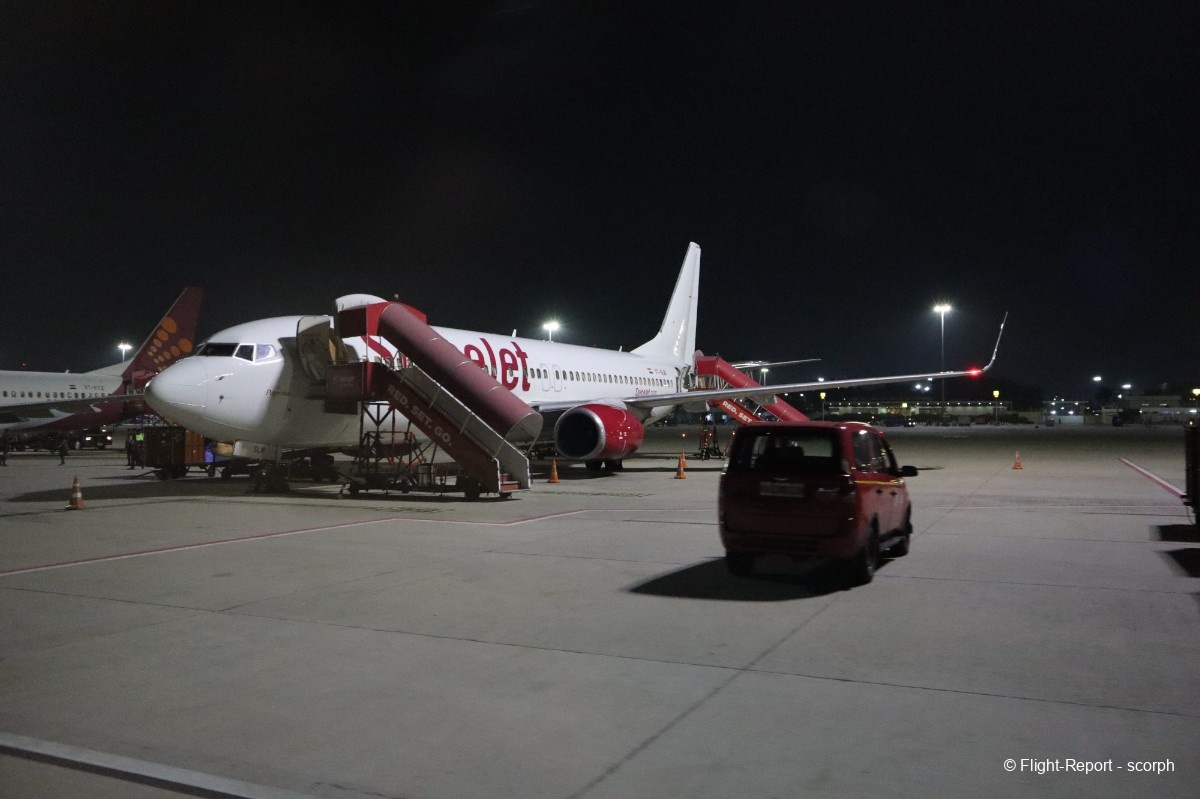
We got held up on the way by an IndiGo Airbus starting its engines right in the middle of the service vehicle lane. And yet, Terminal 1 is just on the other side of the taxiway…
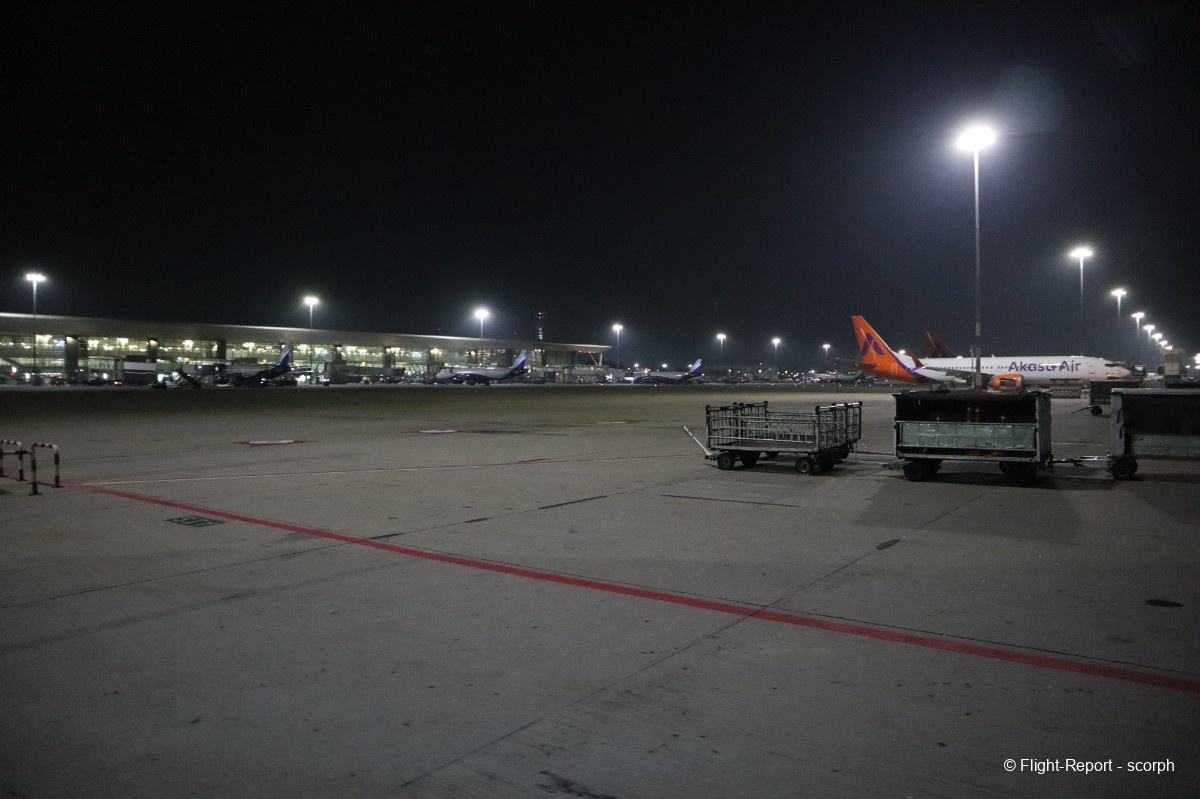
Our bus made a small U-turn and finally found a way around an Airbus A320 belonging to GoAir, which has been parked here awaiting better days since the airline ceased operations at the end of summer 2023. Should be noted that since the beginning of the year is now flying with Air Arabia.
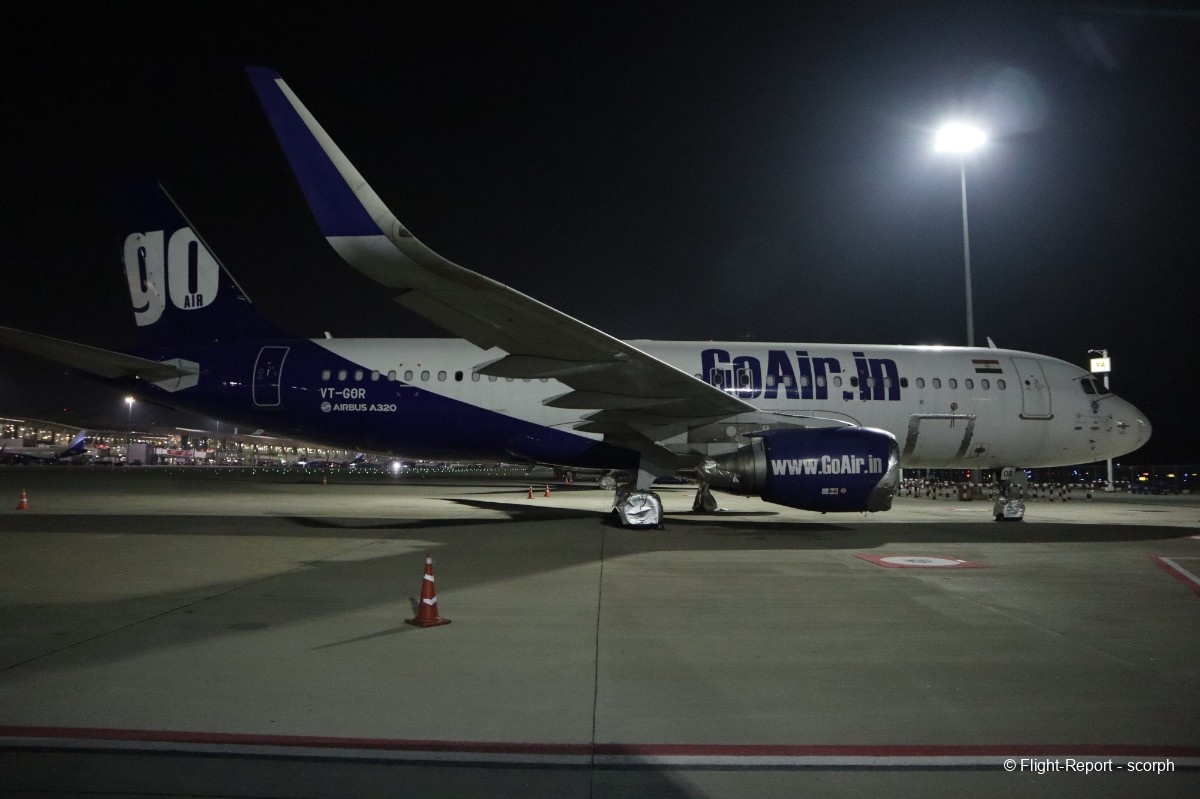
We finally arrived safely and in front of the right terminal! Once again, the bus that we took was a fully electric vehicle.
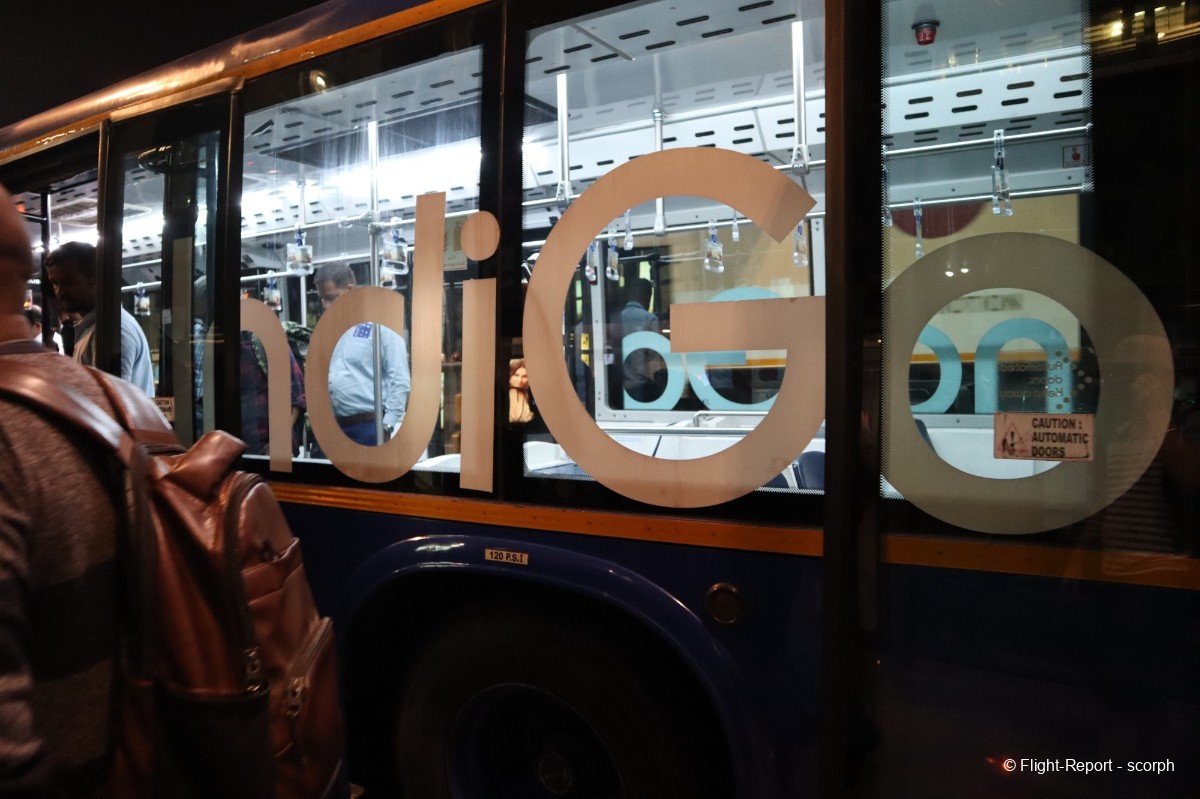
Here we are in the arrival corridors of Terminal 1. Dedicated pathways for connections are available, which seems quite common given the number of connecting flights offered by Indian carriers, whether low-cost or not. In fact, as seen in the previous flight report, many flights include intermediate stops, and when you buy your ticket, it’s even specified if you’ll stay onboard the same aircraft during the stop.
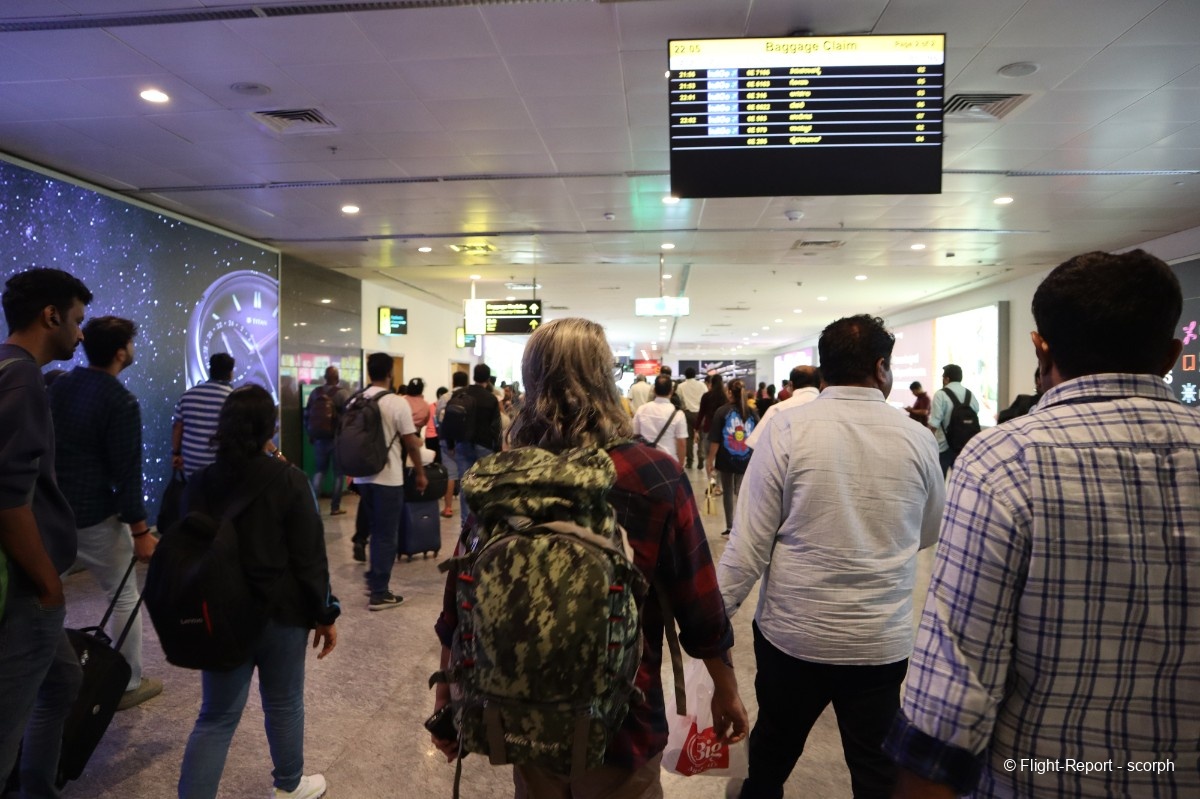
The baggage carousel is still empty, but it won’t be long, just a few minutes, before the checked luggage starts appearing on the belt. That includes my backpack, which was a bit too large to fit in the ATR’s overhead bins.
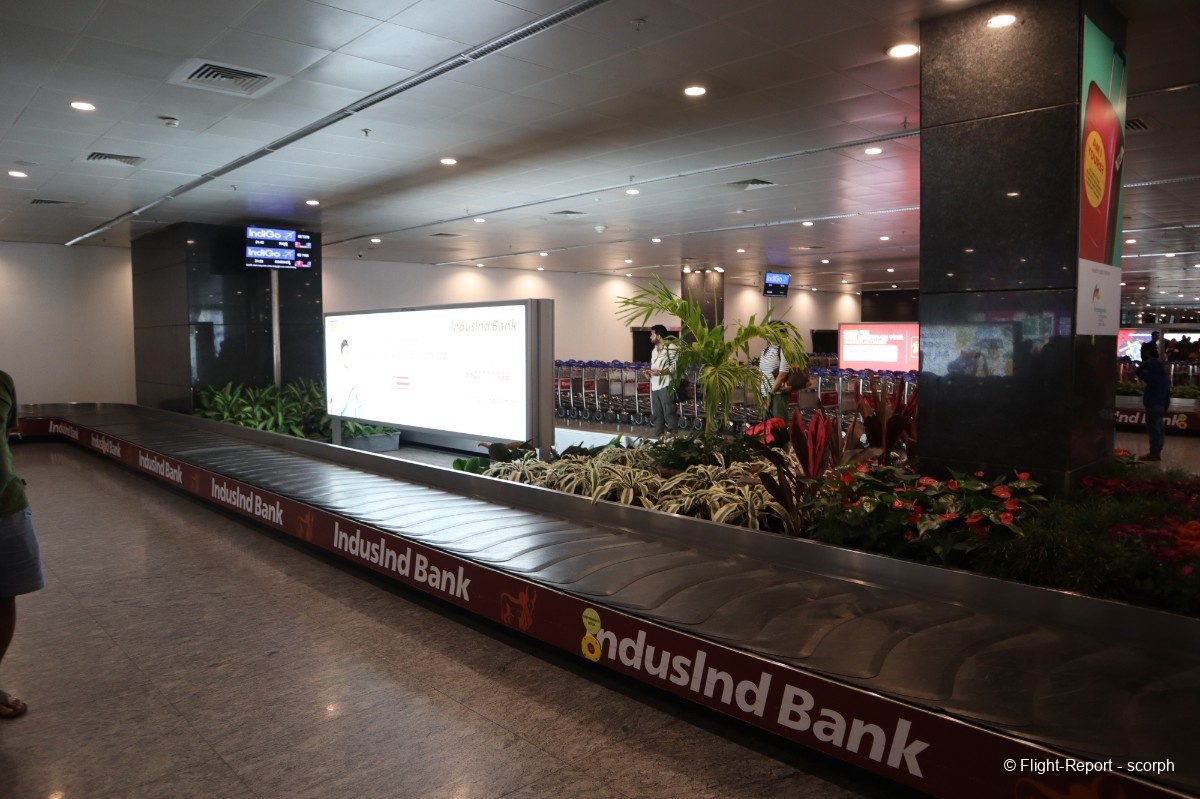
Once we’ve collected our luggage, it’s straight toward the exit! There are quite a few people in the terminal tonight, but it’s far from overcrowded… Then again, after spending a month in India, maybe I was just getting used to the usual hustle and bustle of the crowds here.
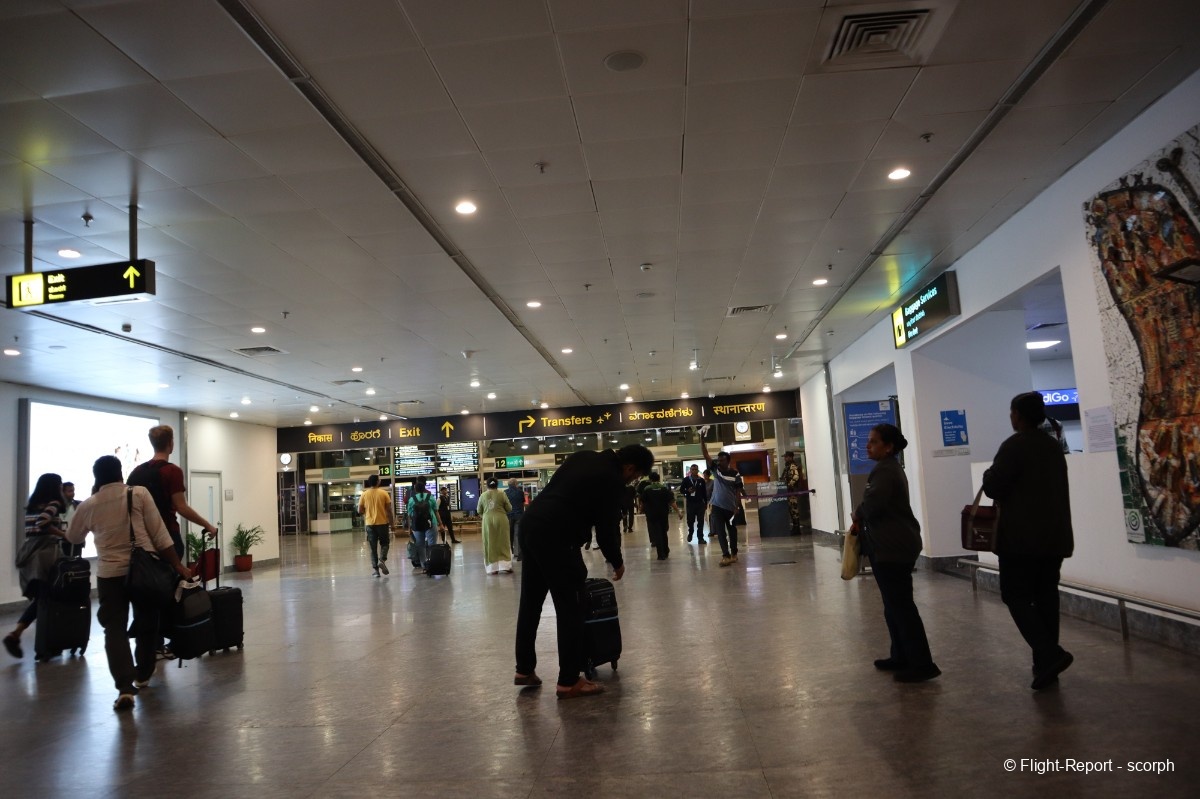
A quick pass through the arrivals hall on the ground side, which is still somewhat deserted since accompanying persons aren’t allowed to enter this area.
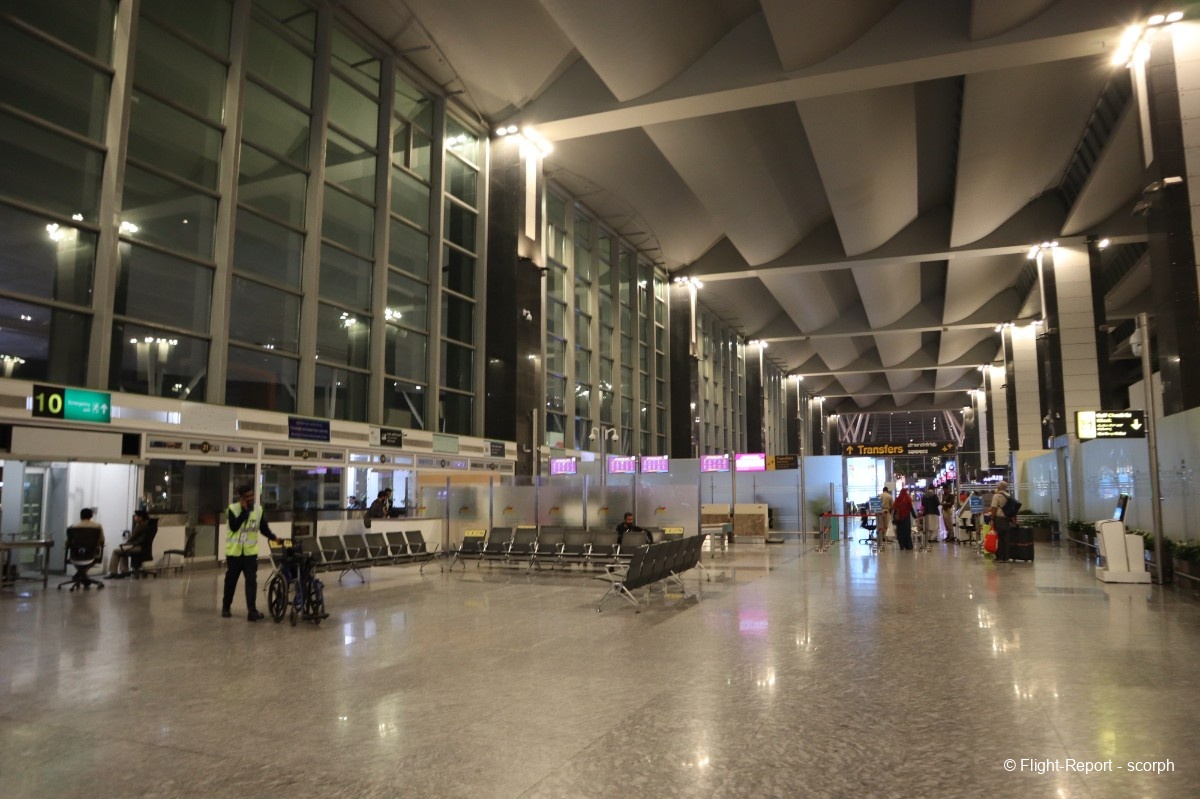
We quickly emerge airside, and oddly, it’s quite calm, even if all passenger services remain open despite the late hour. This includes everything from the airline counters to the food stalls.
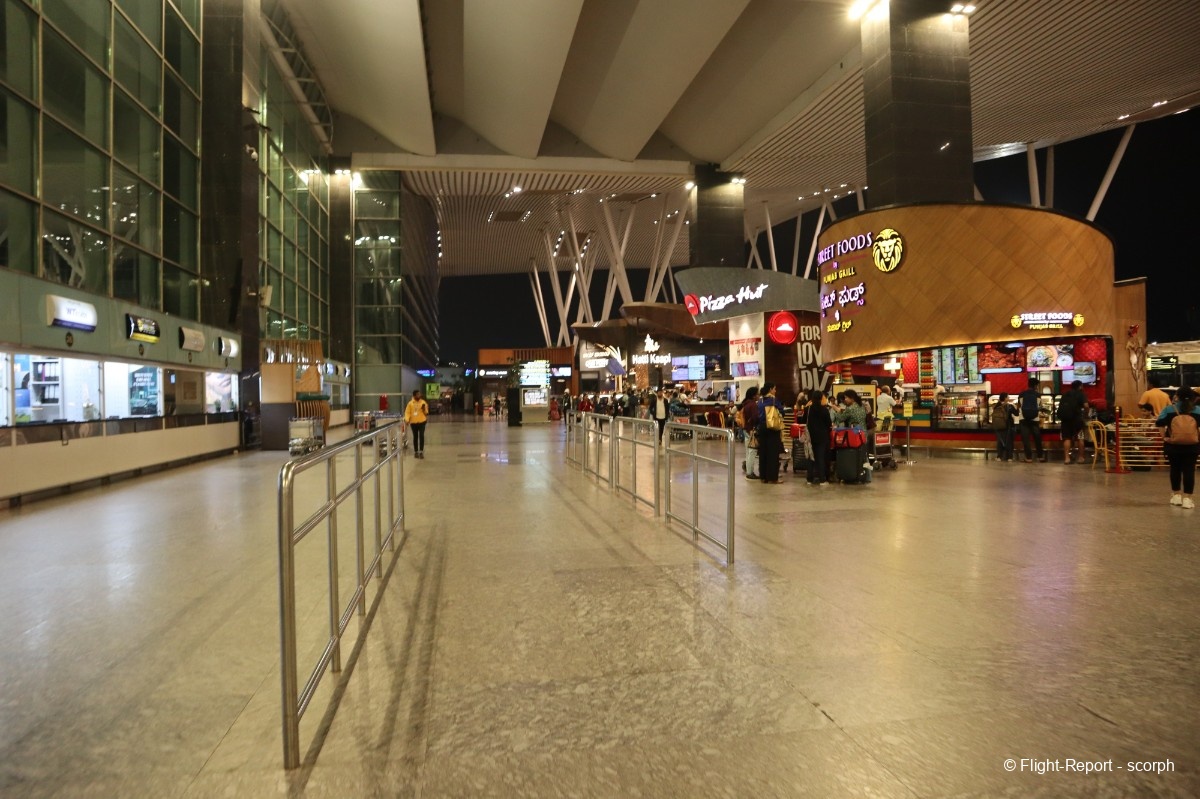
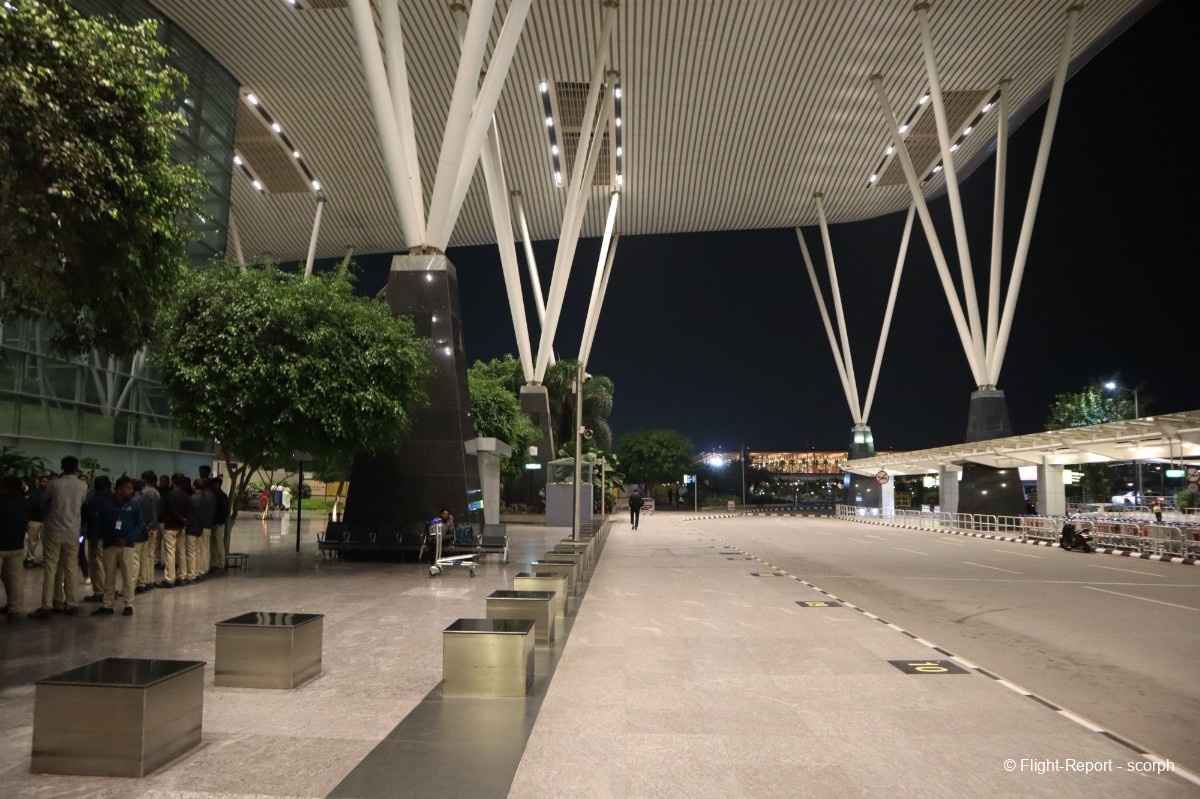
We headed to the taxi stands since Uber was especially expensive this evening about 1,500 INR (roughly €18) to get to downtown. The drivers are honest and use the meter (you can even get a receipt by email), but there are no card machines for foreigners, so it’s cash only and make sure you have the exact change. That said, traffic in Bangalore is notoriously chaotic, so plan for about 1.5 hours to reach the city center. It’s a shame there’s no heavy, rapid transit option available.
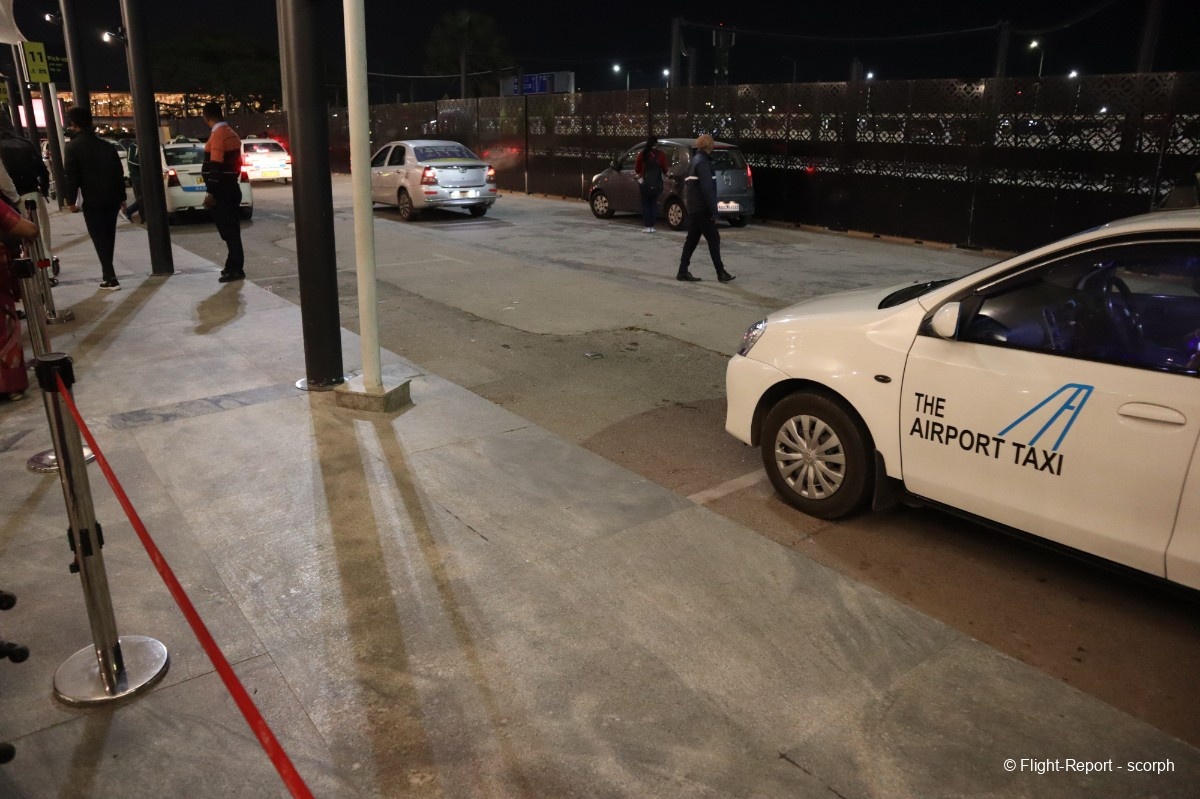
This is where this “return only” story ends my way of making up for this little infidelity to the big aviation industry. As a bonus, here’s a glimpse of Hampi, the main historical site in the state of Karnataka.

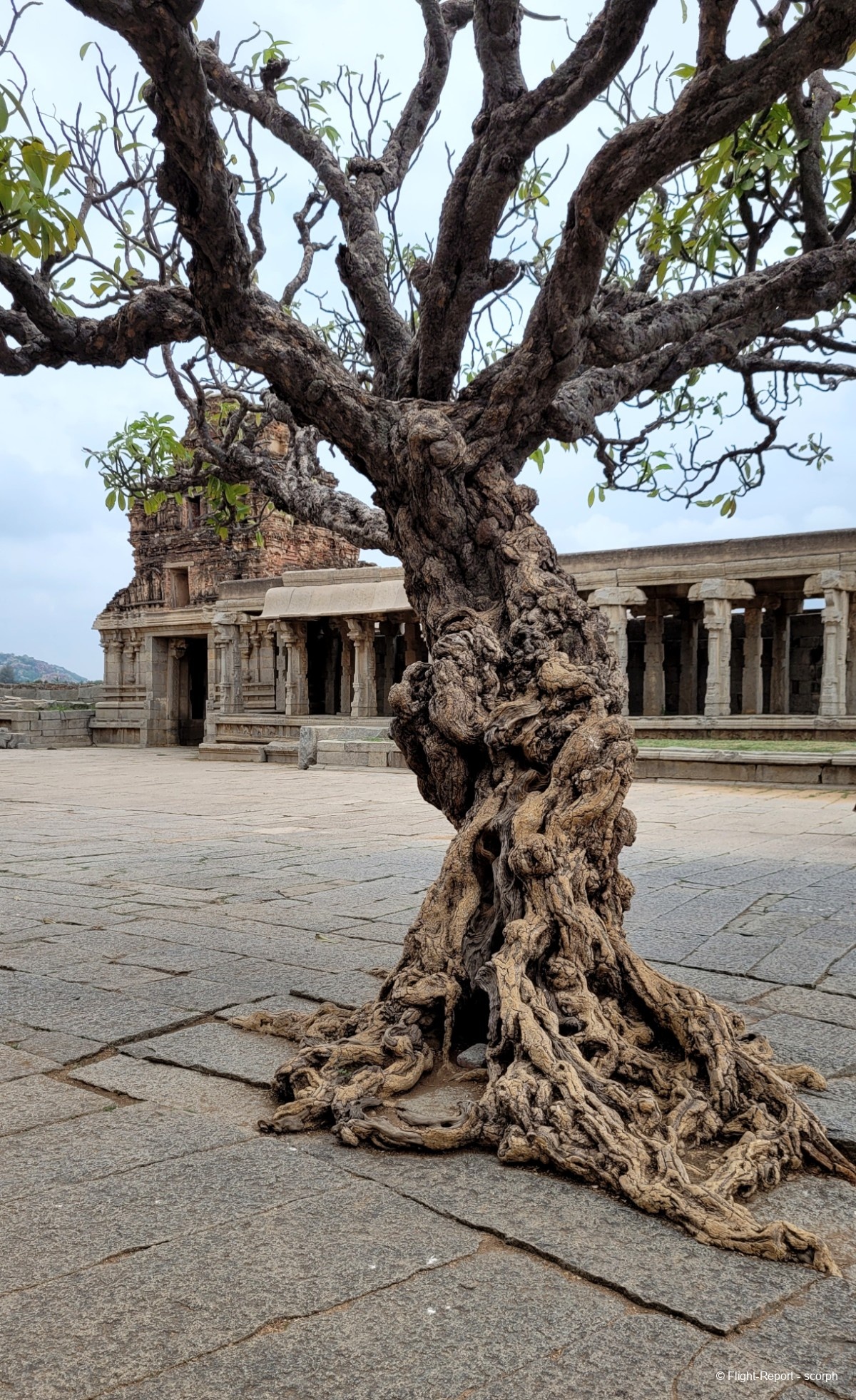
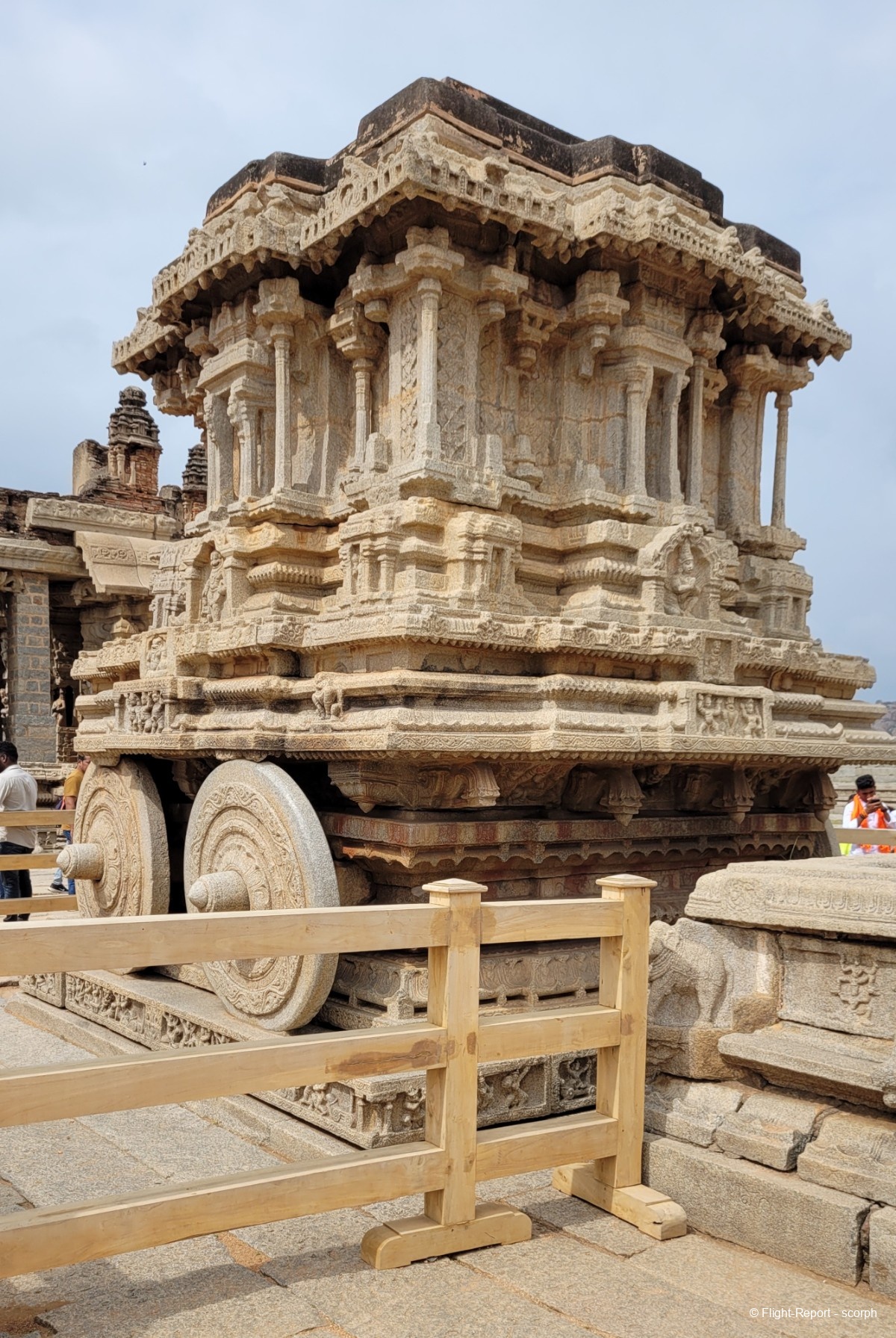
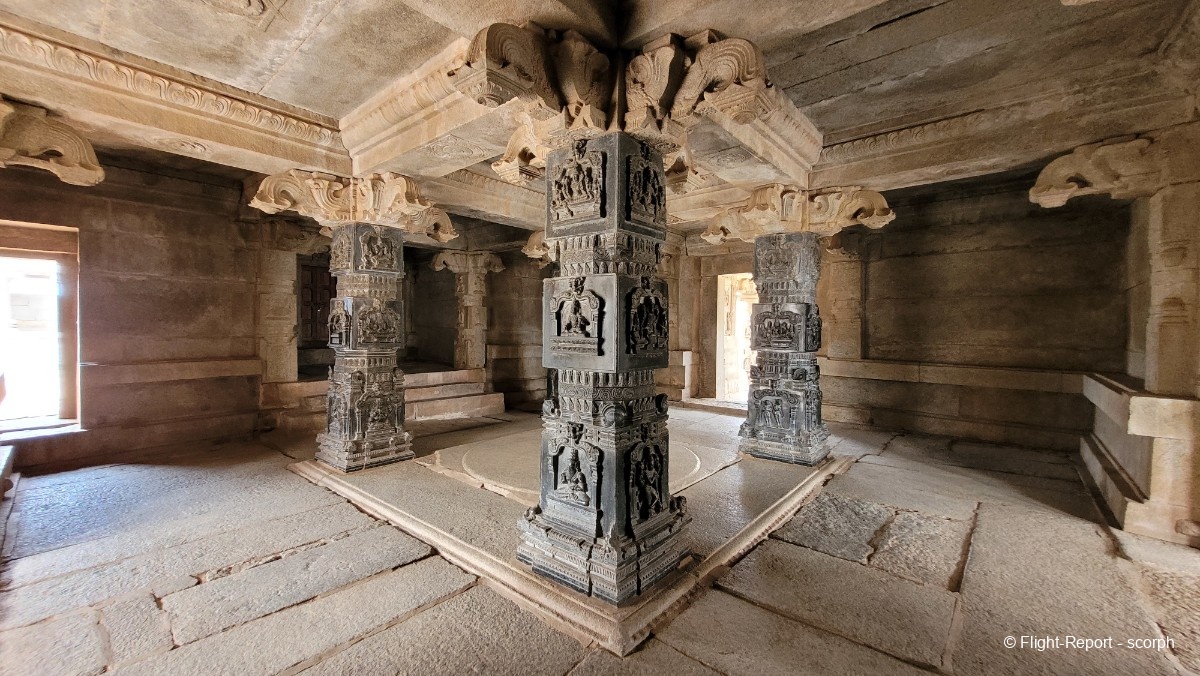
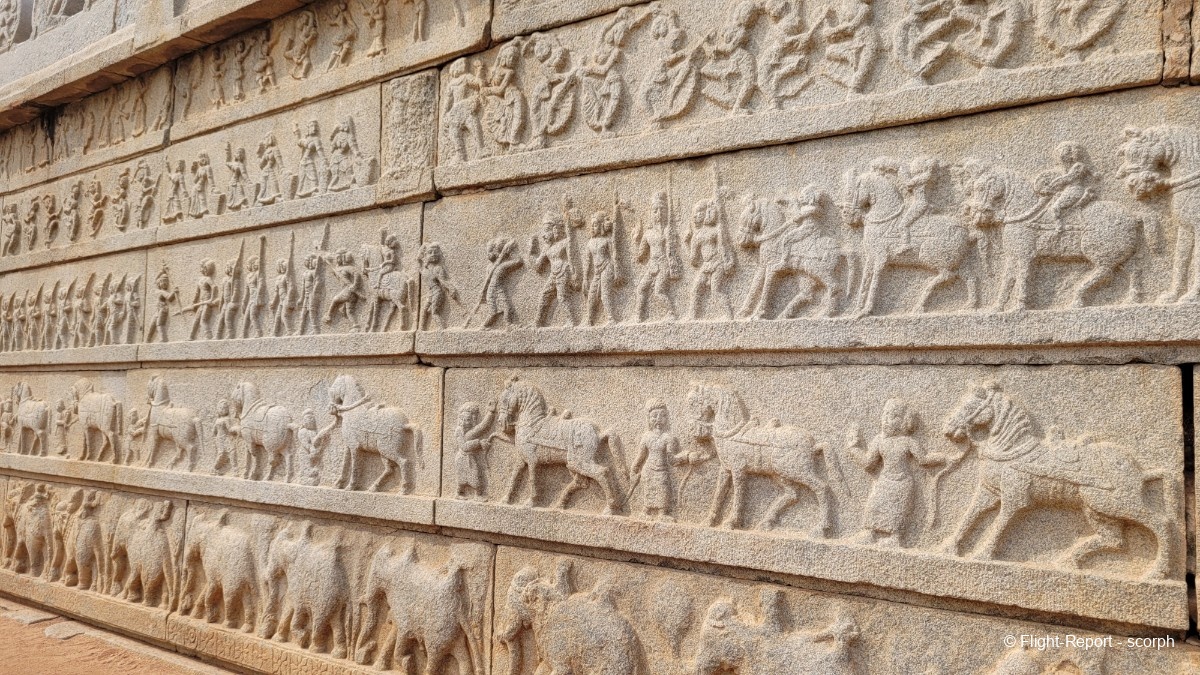
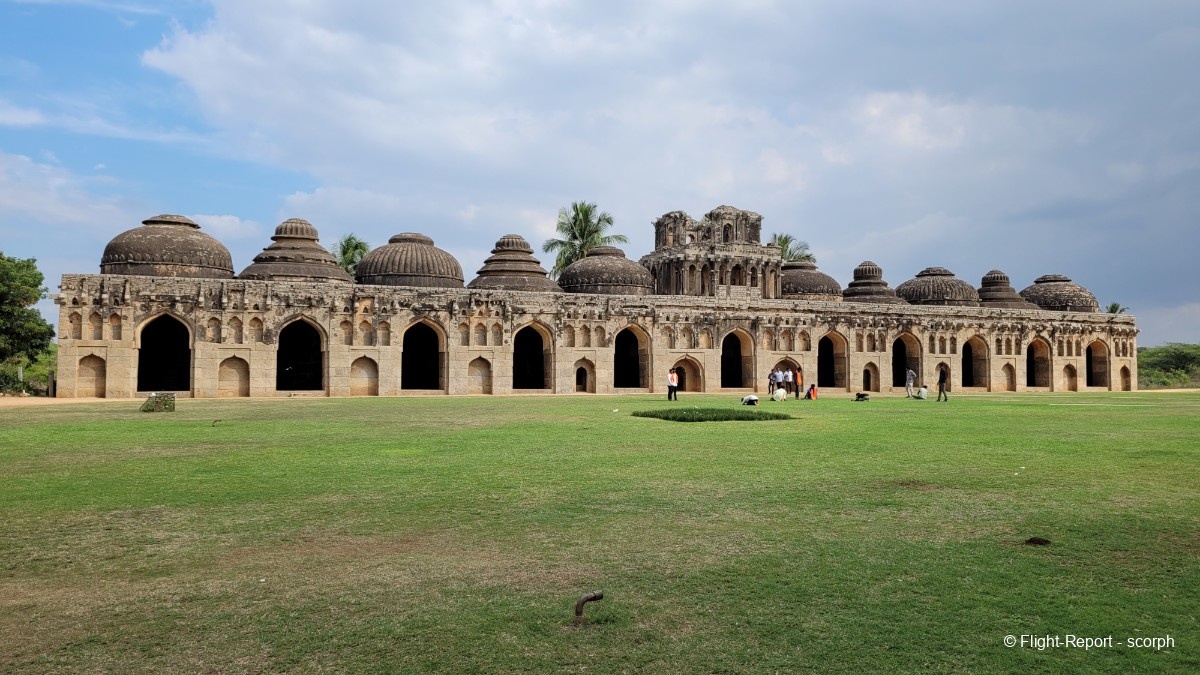
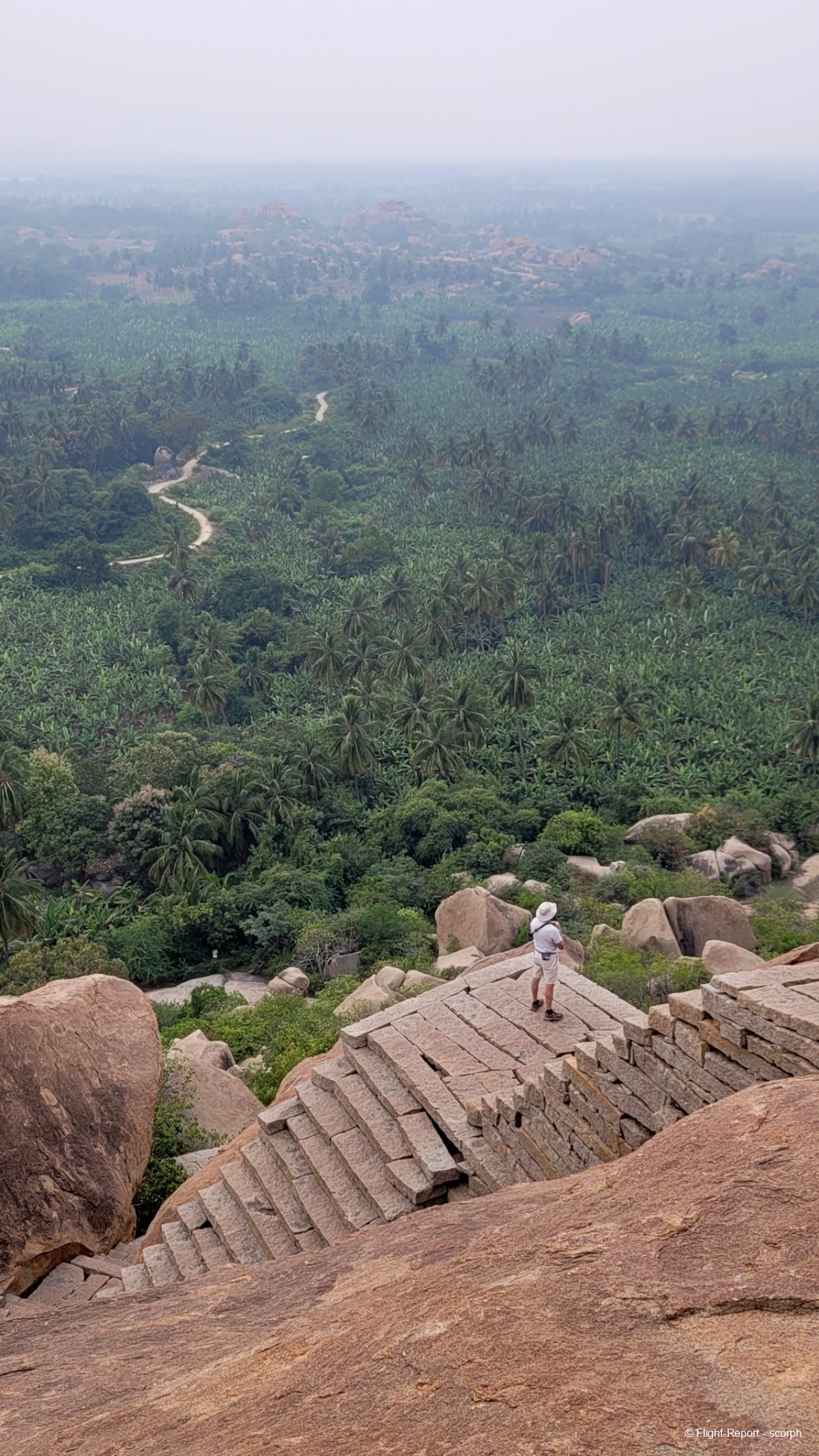
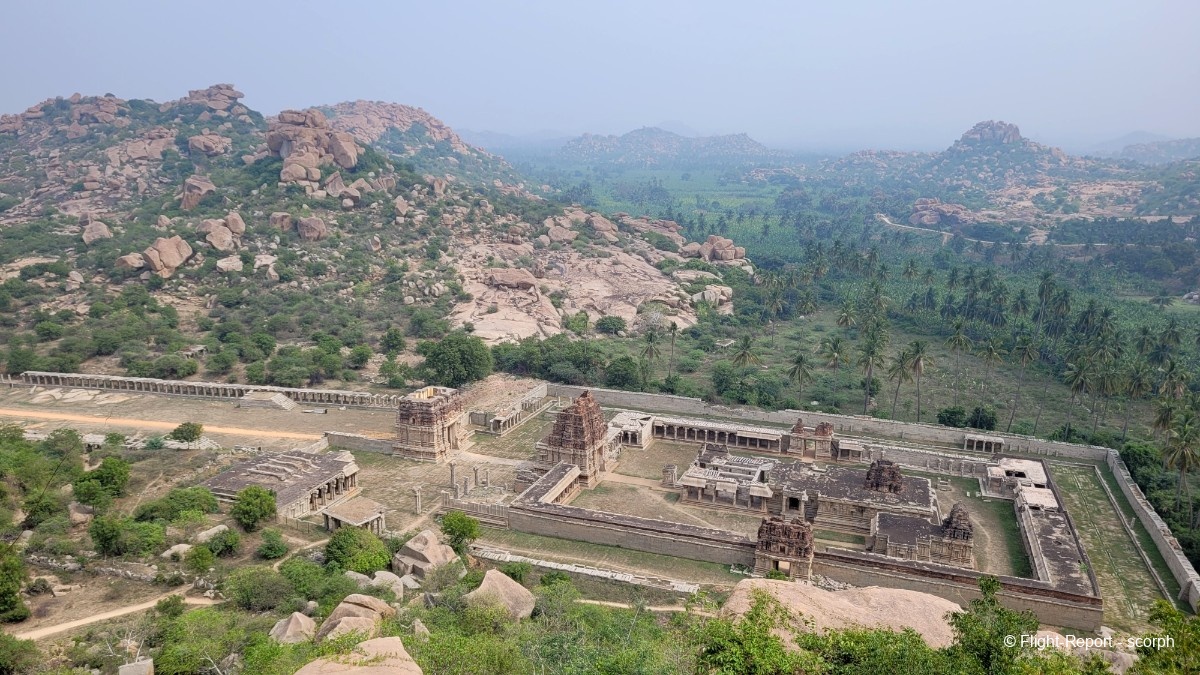
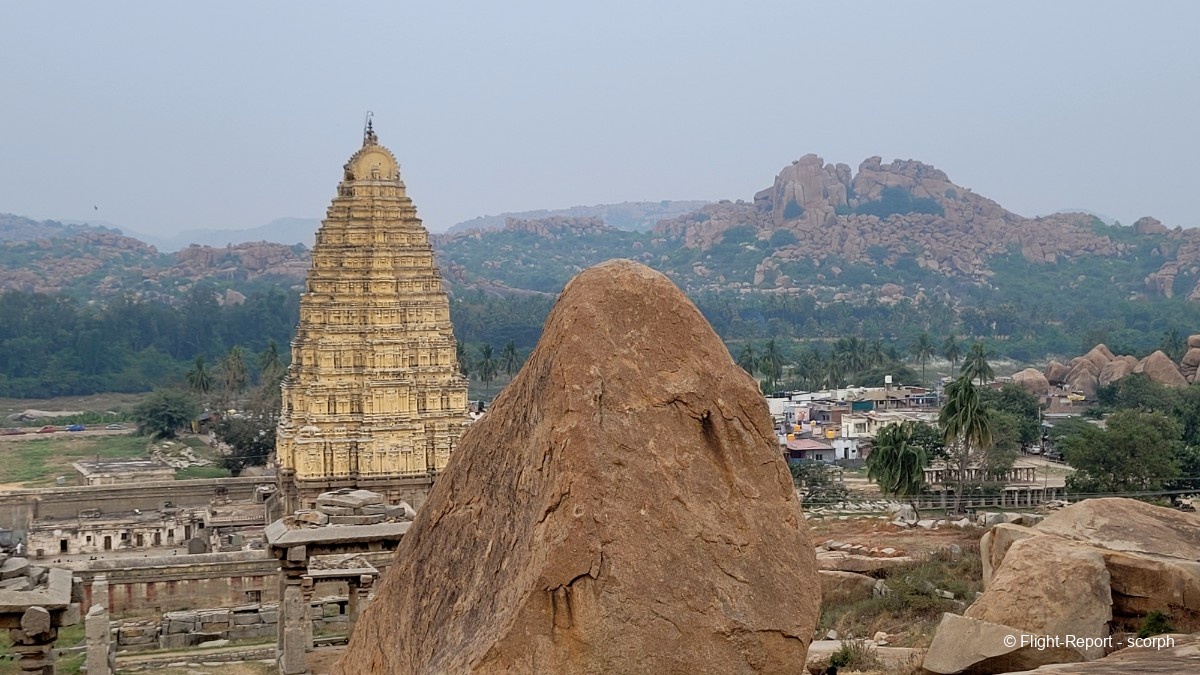

Your review says you flew in 2026. It should be changed.